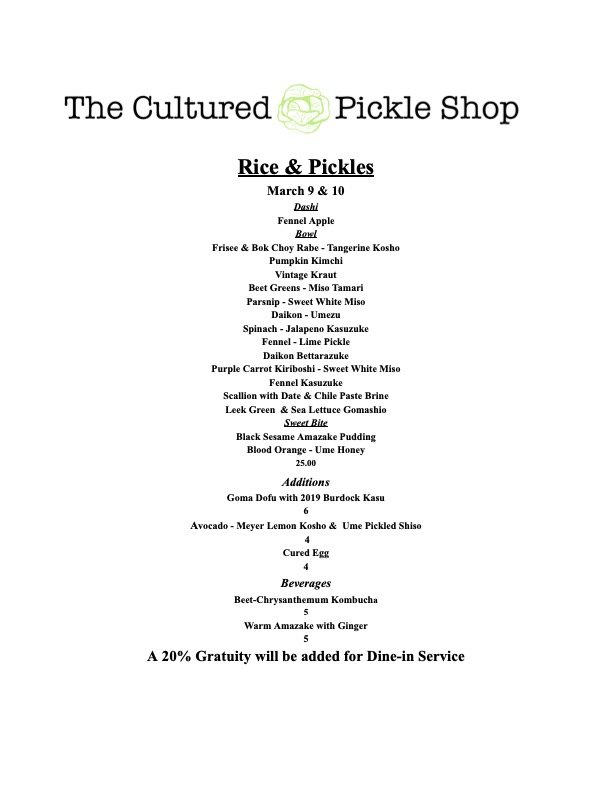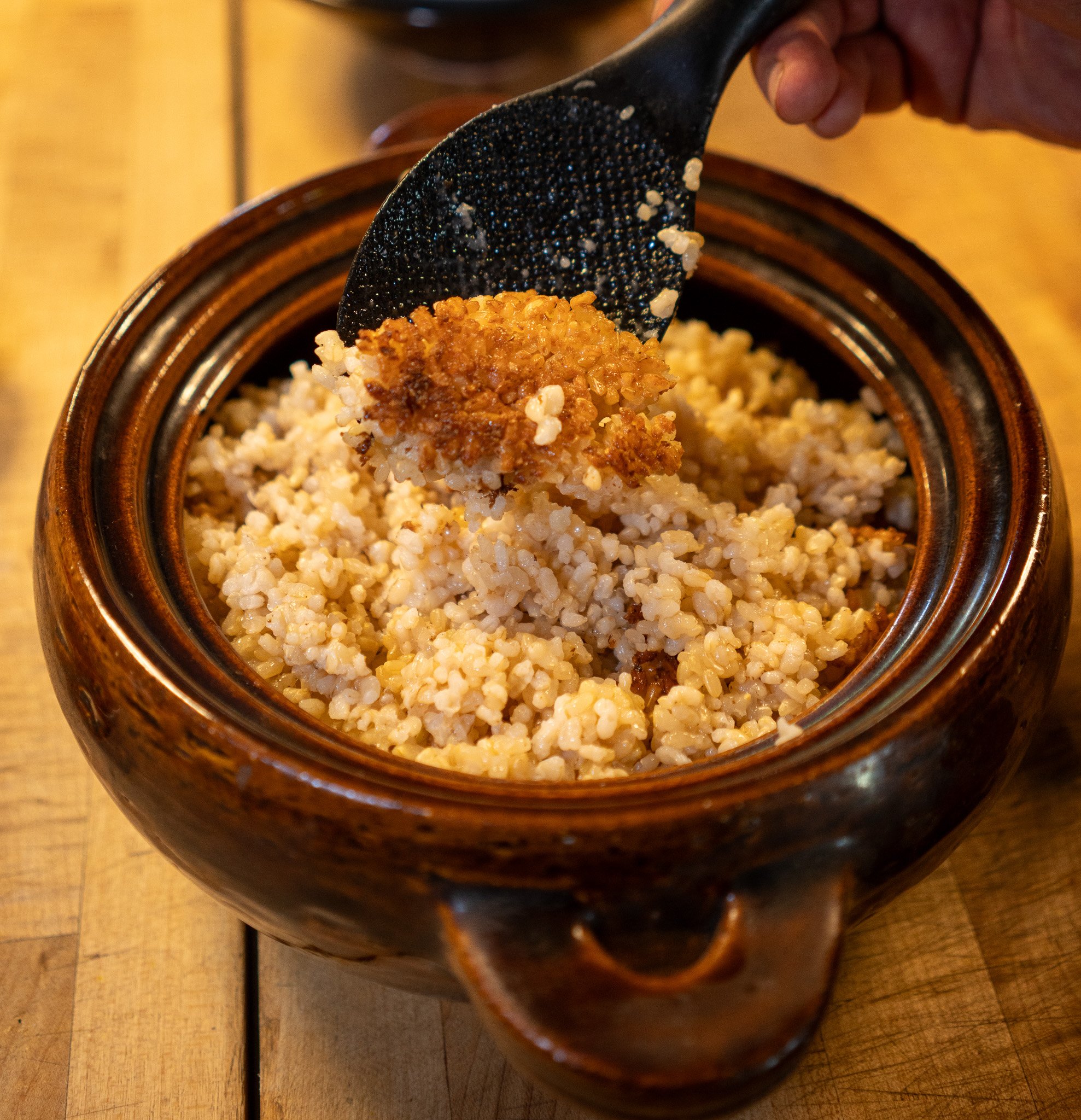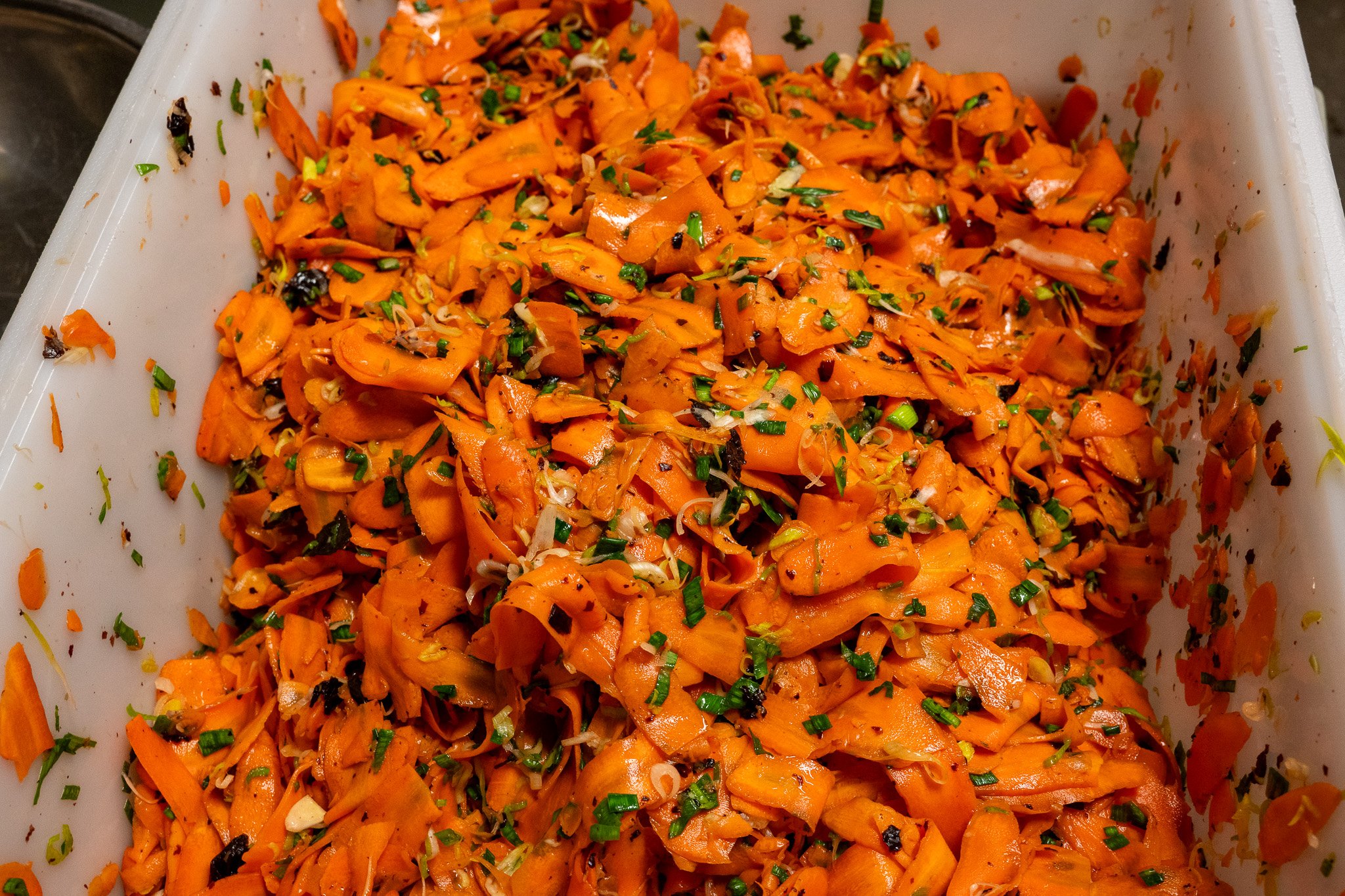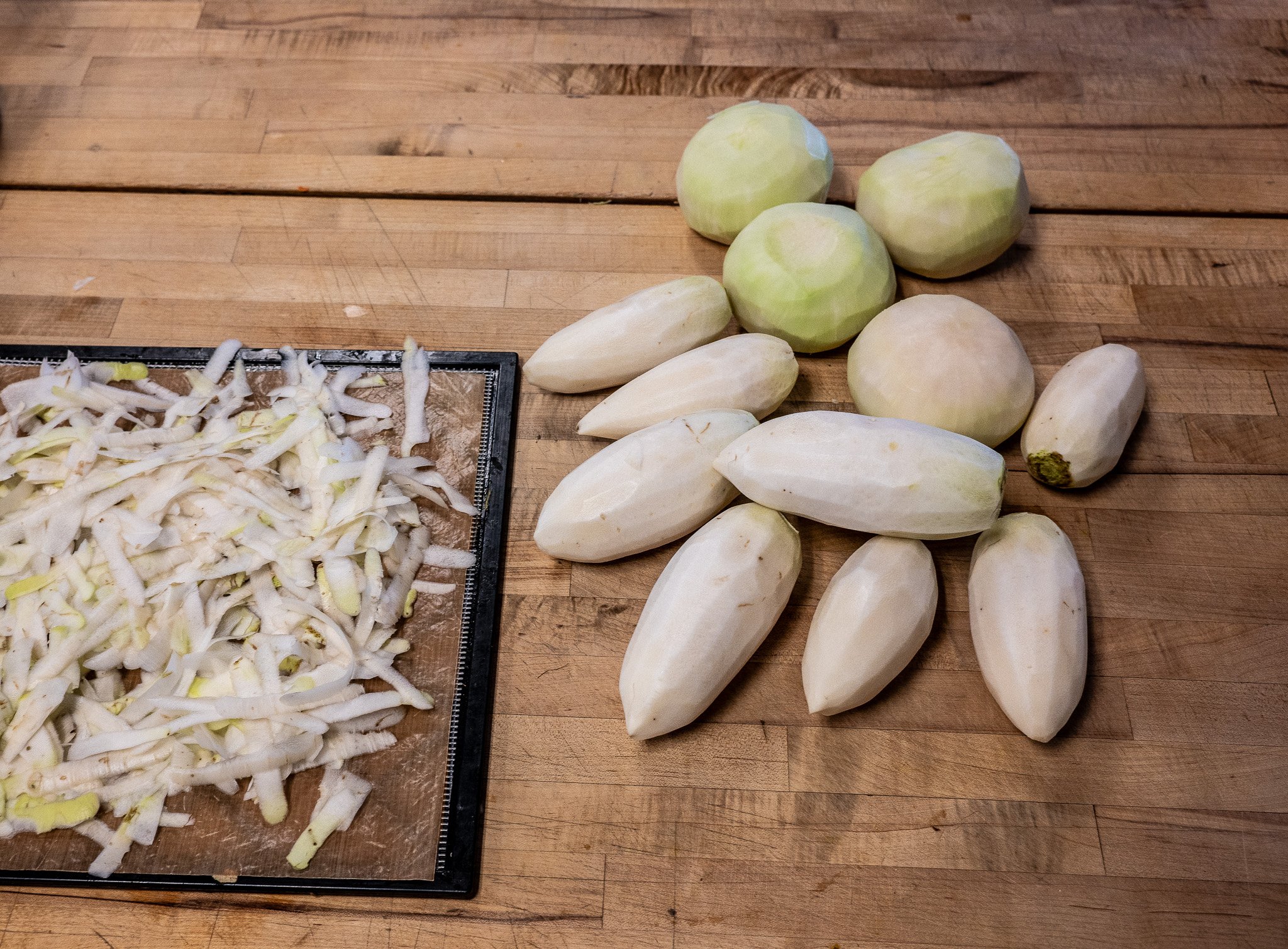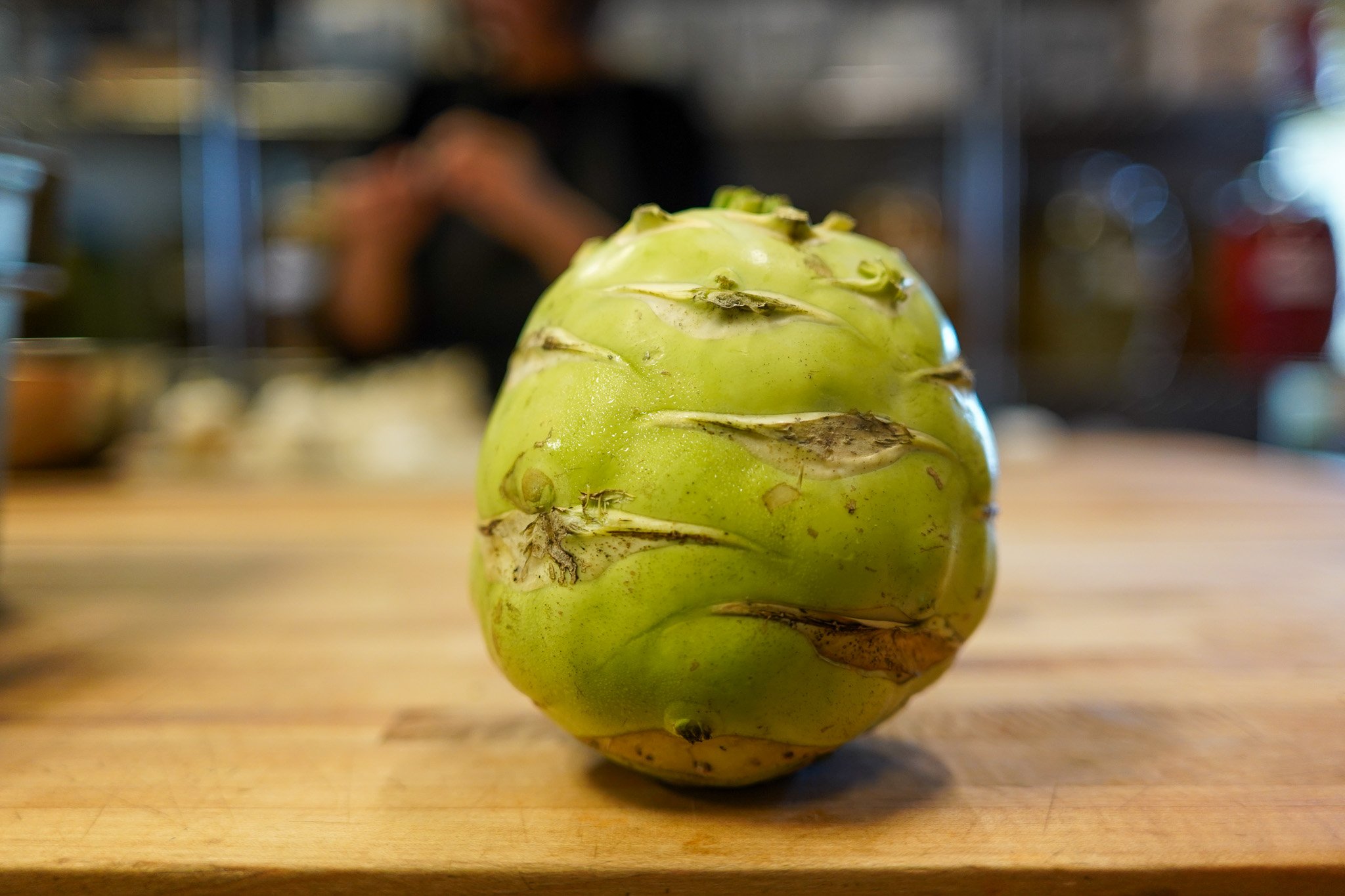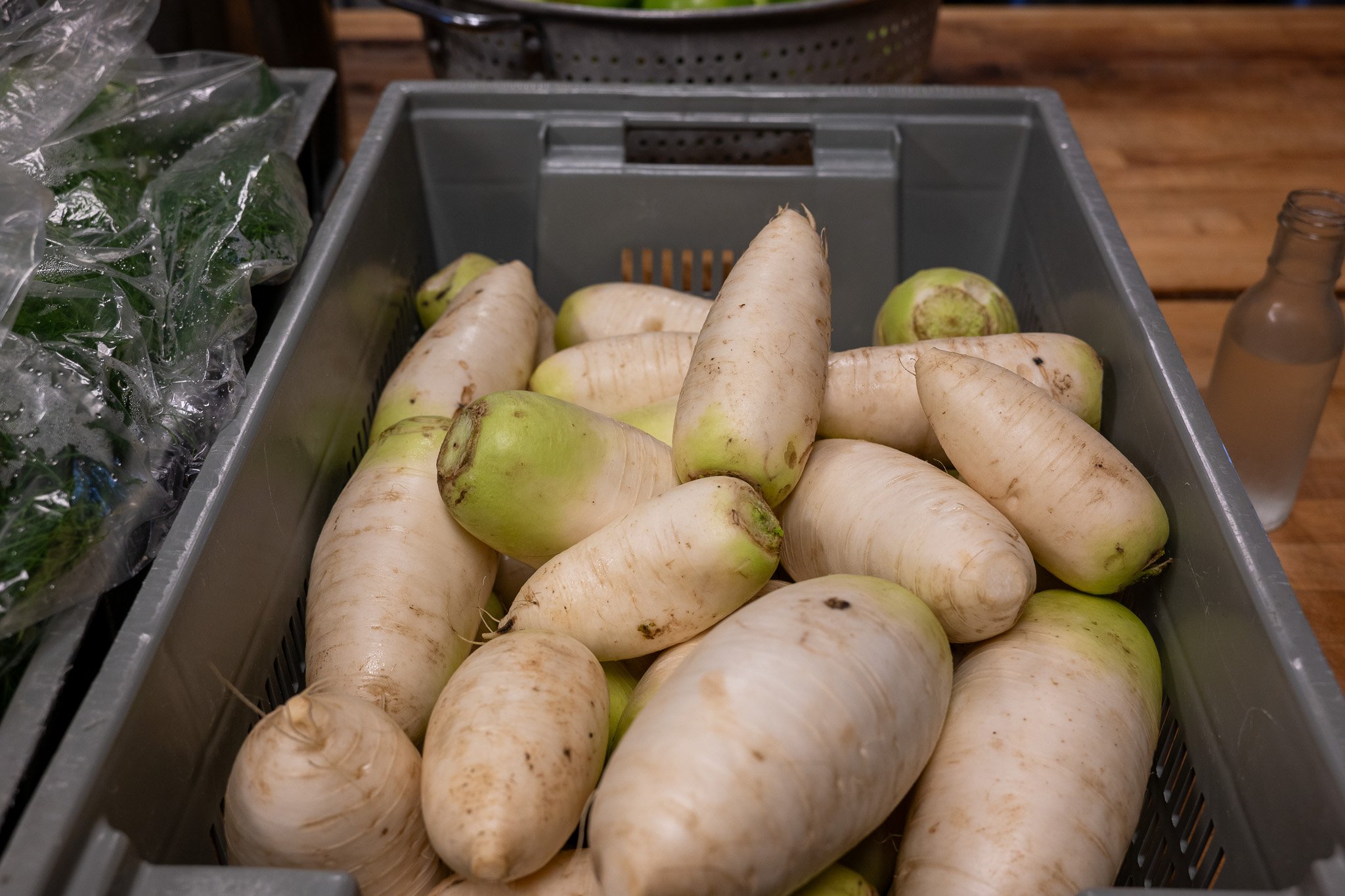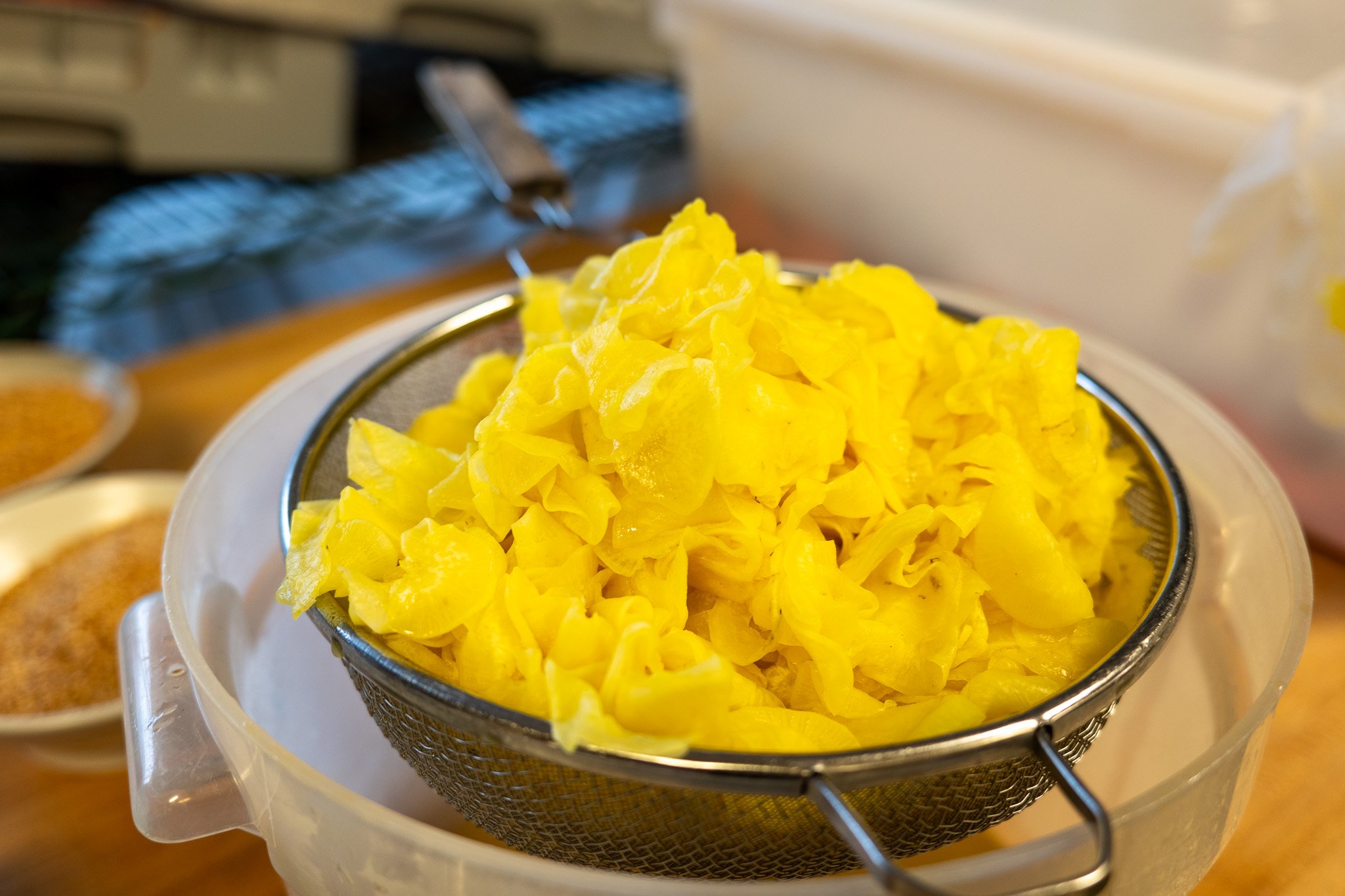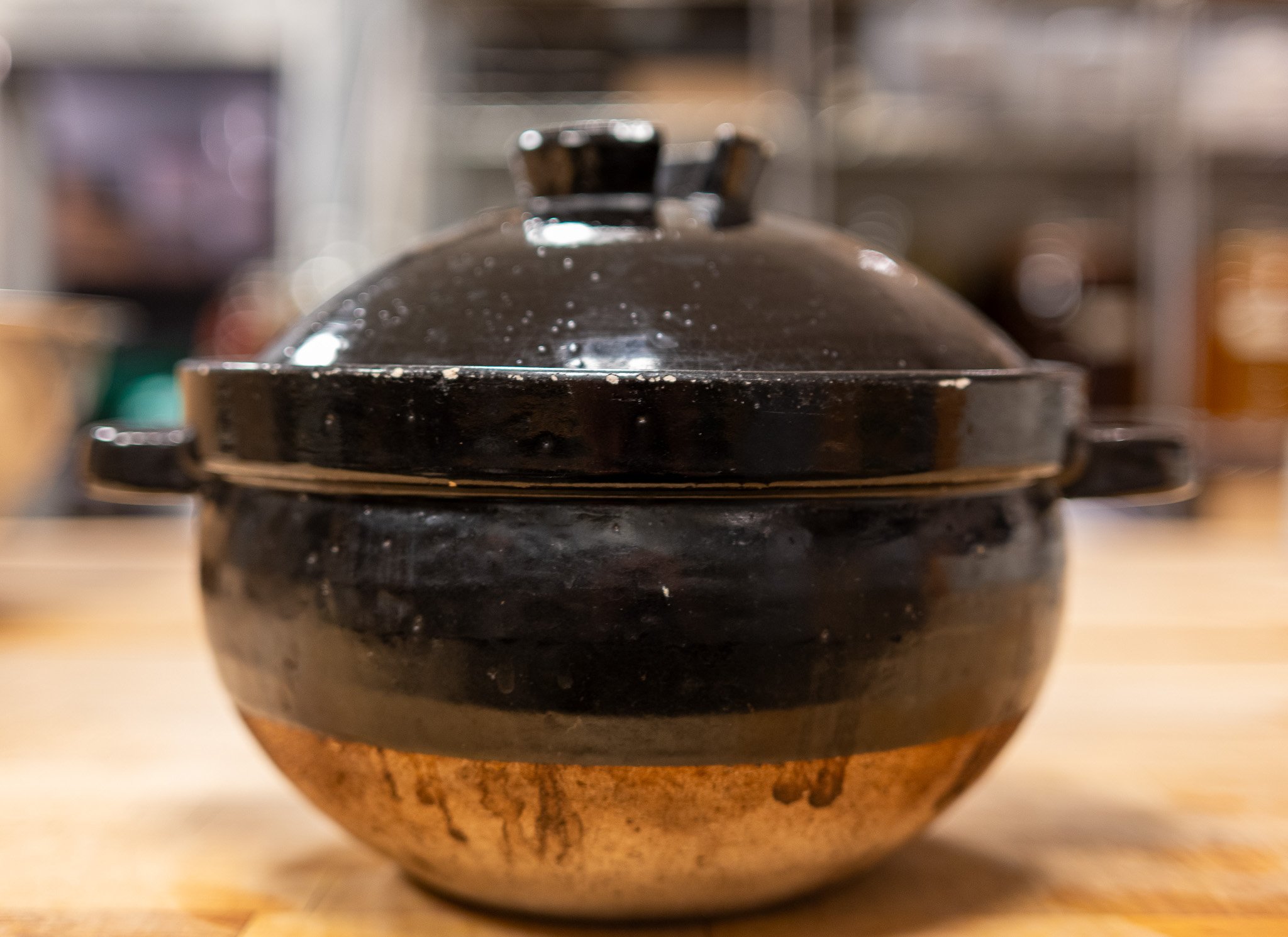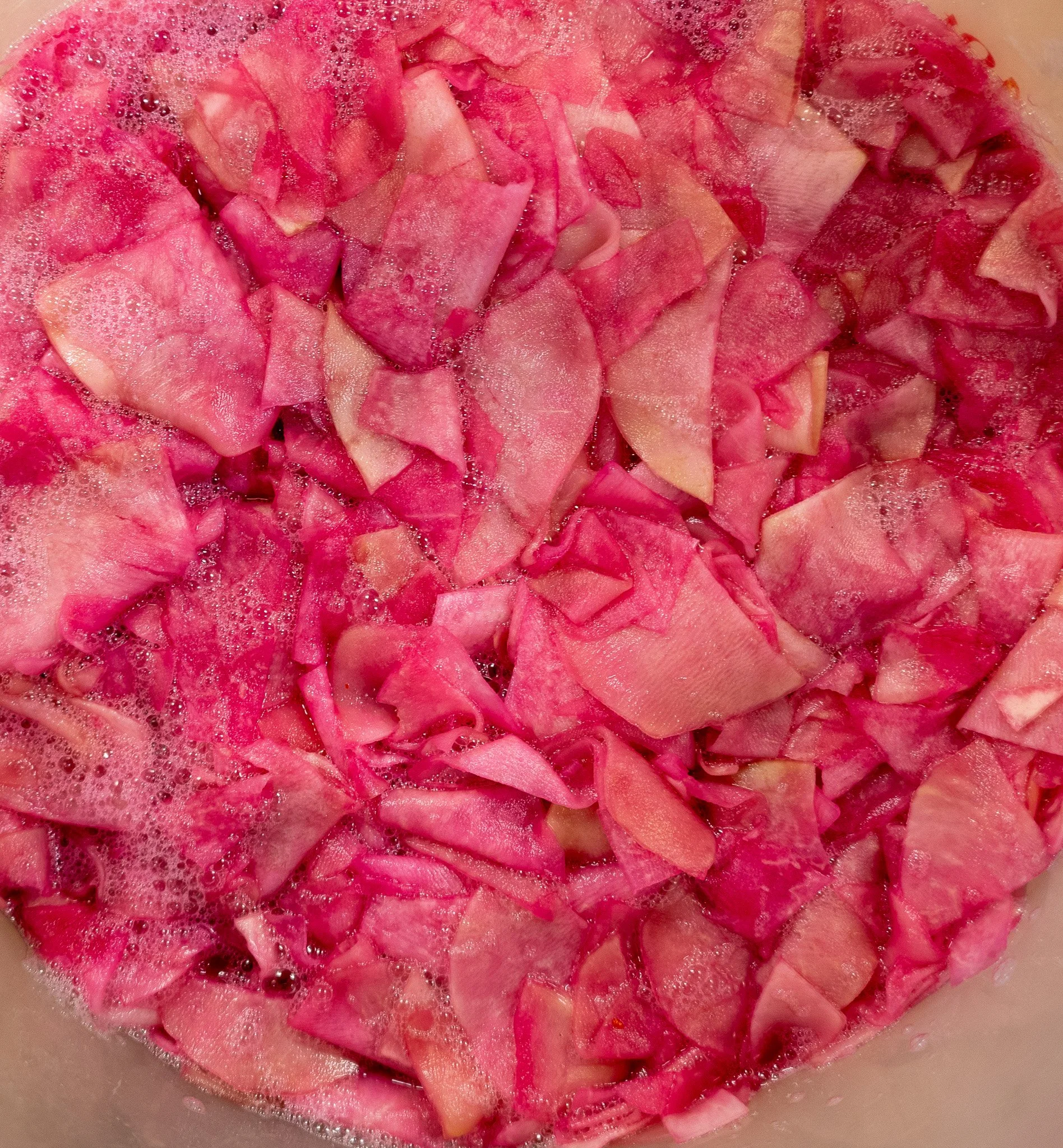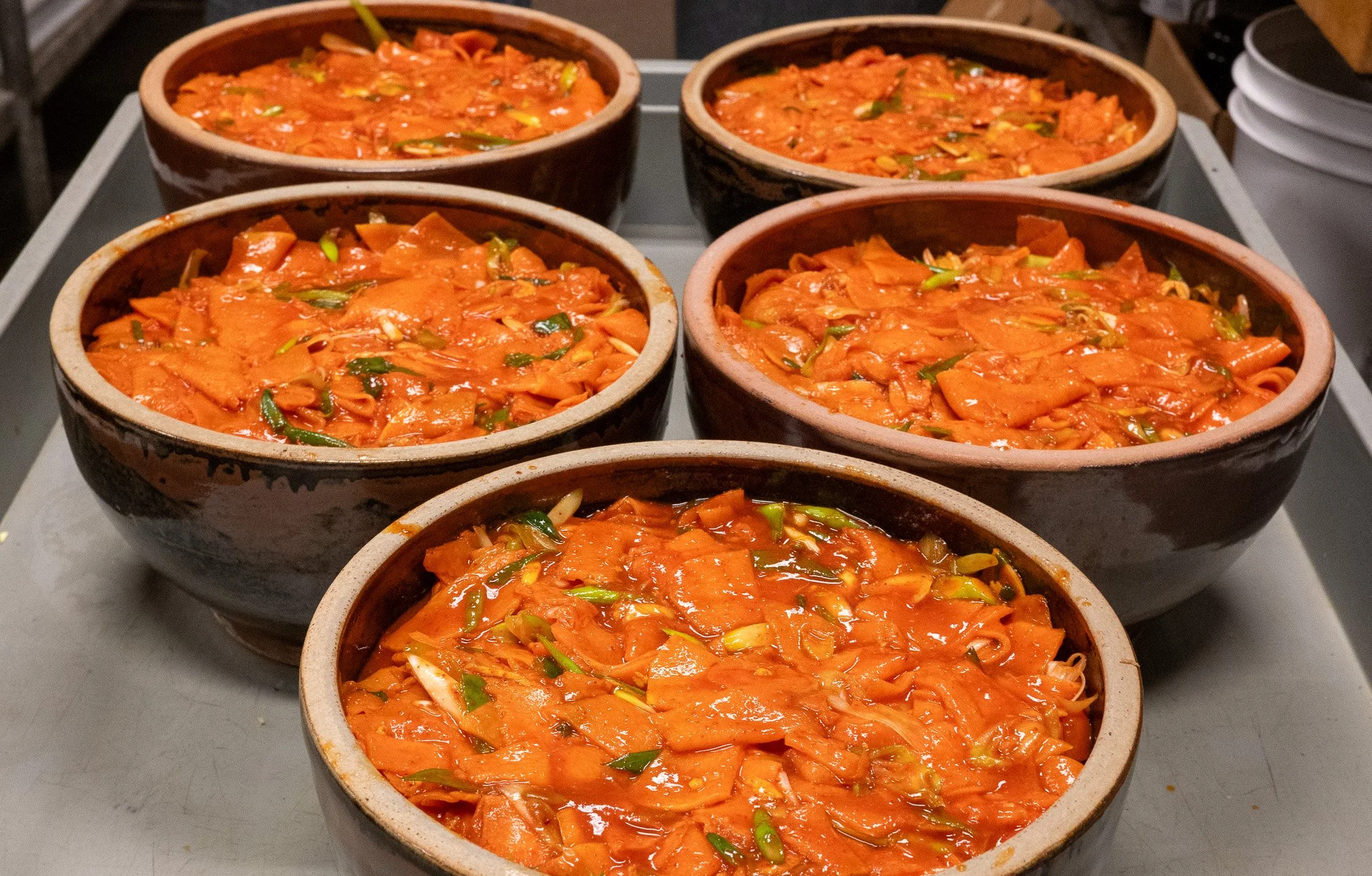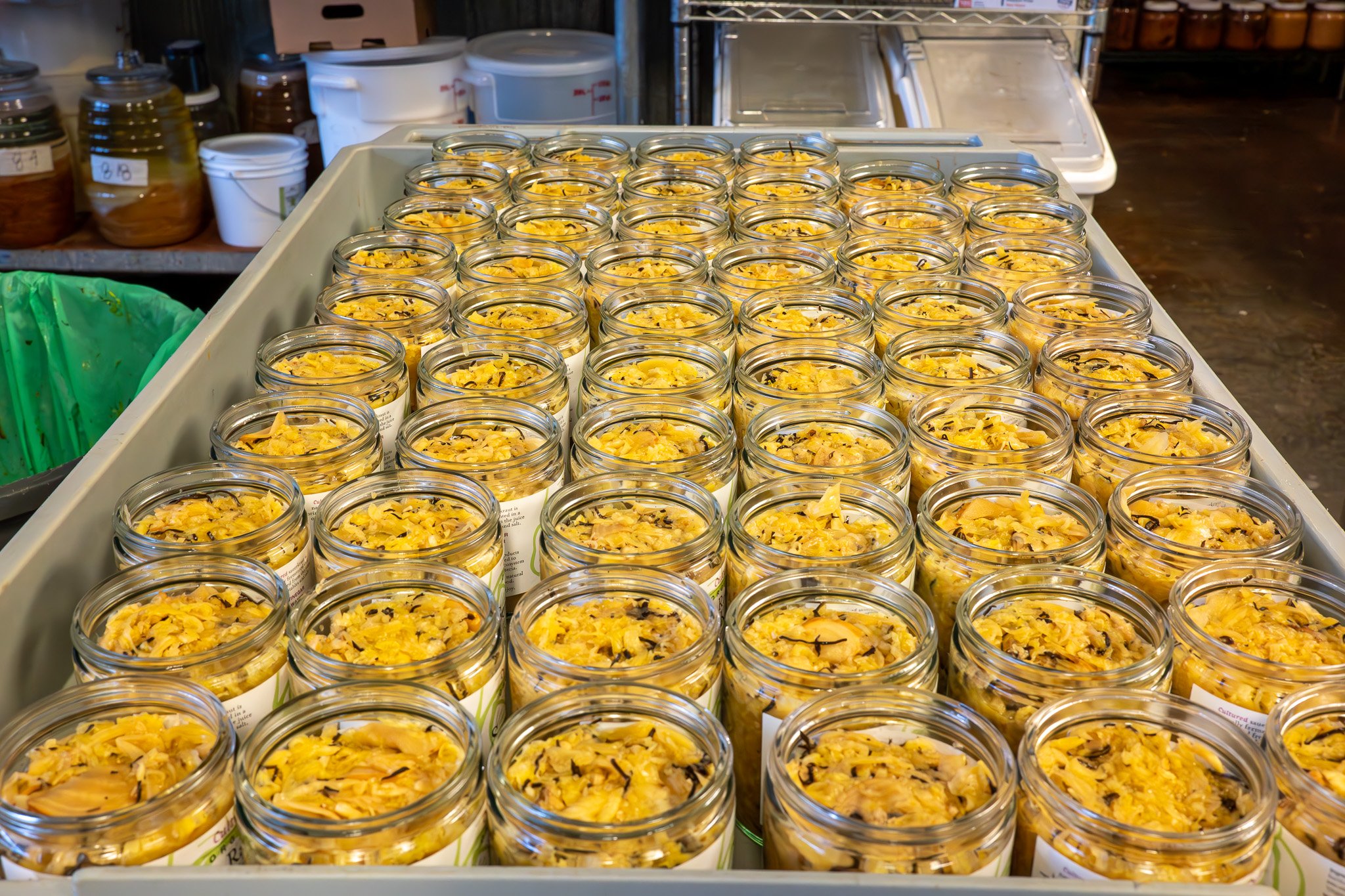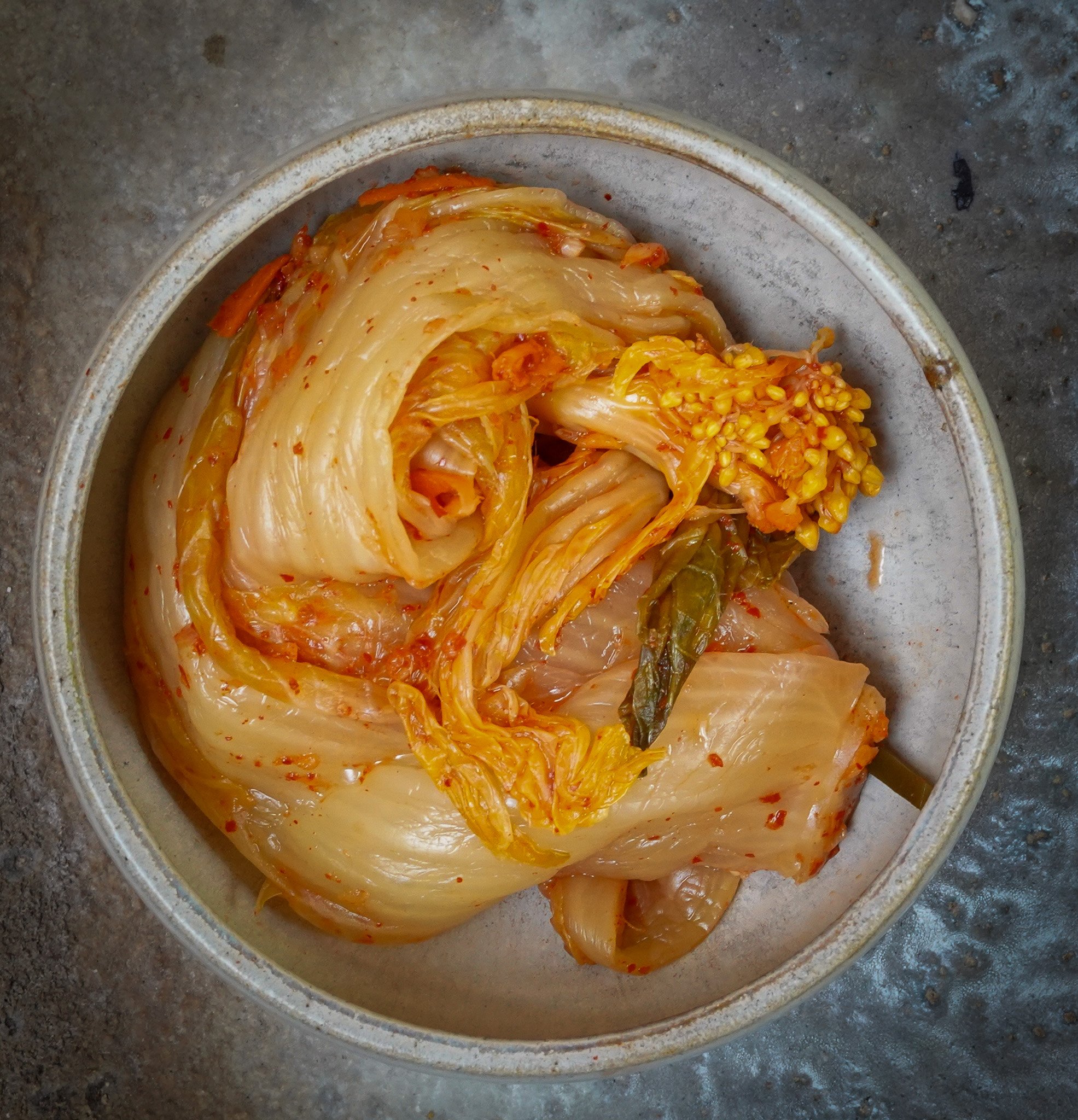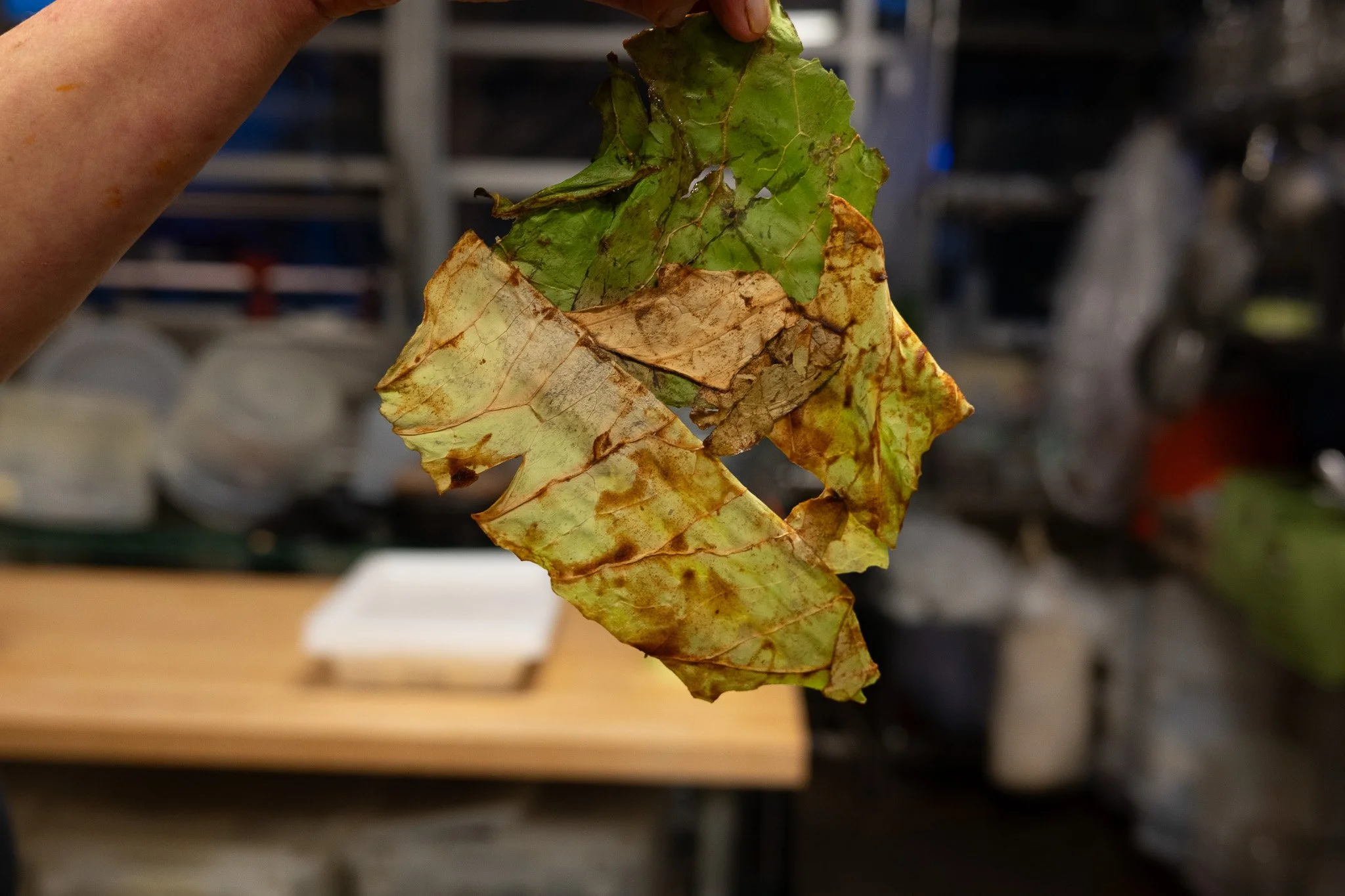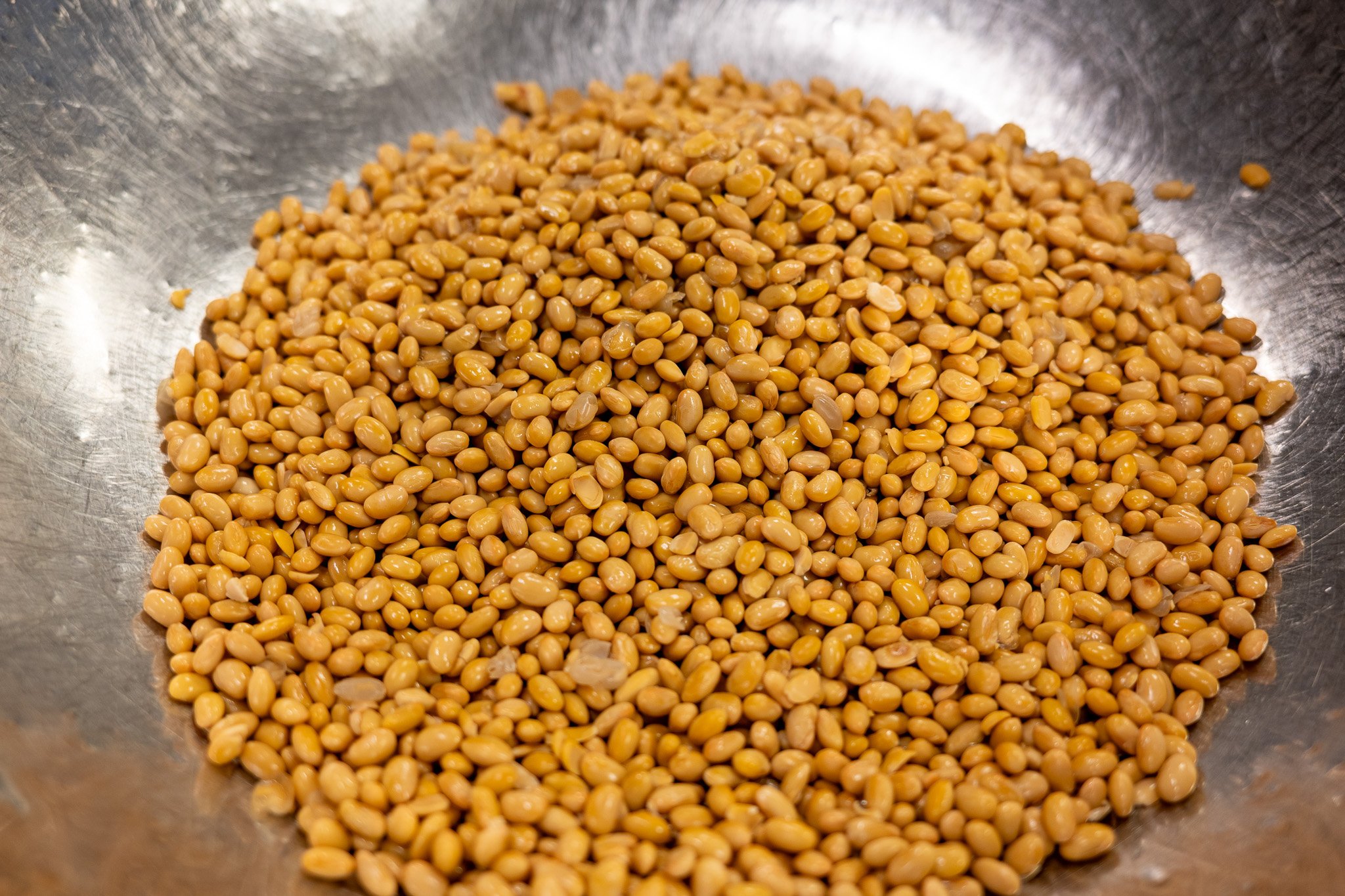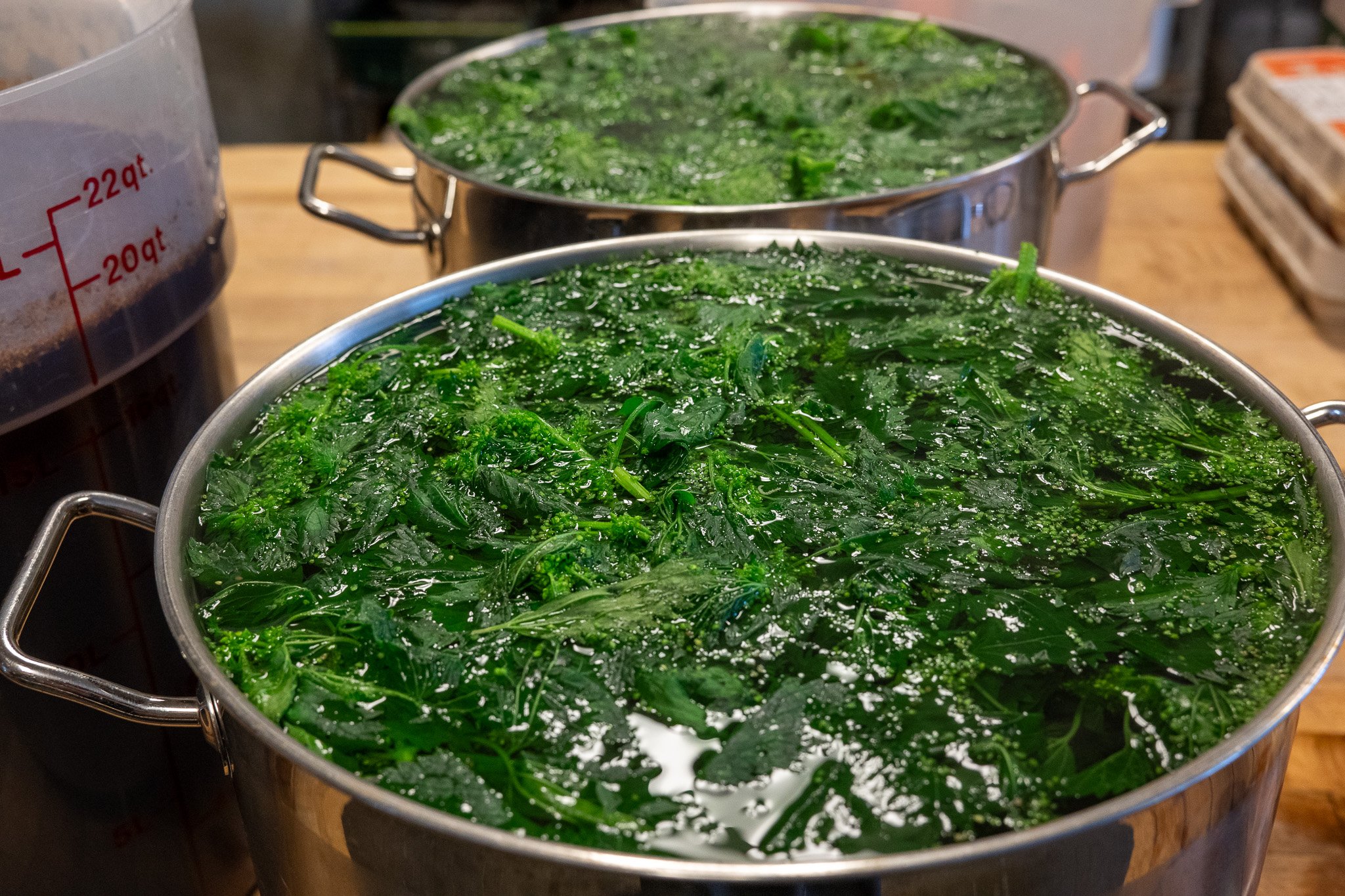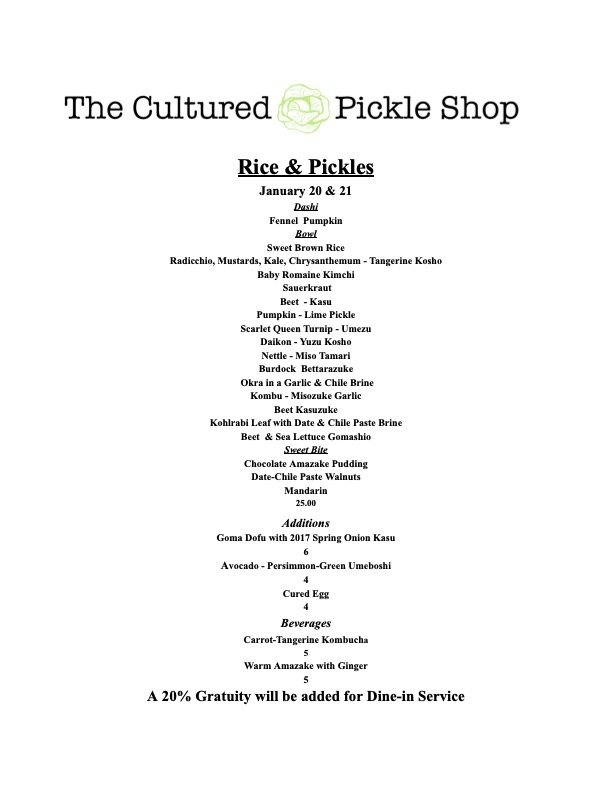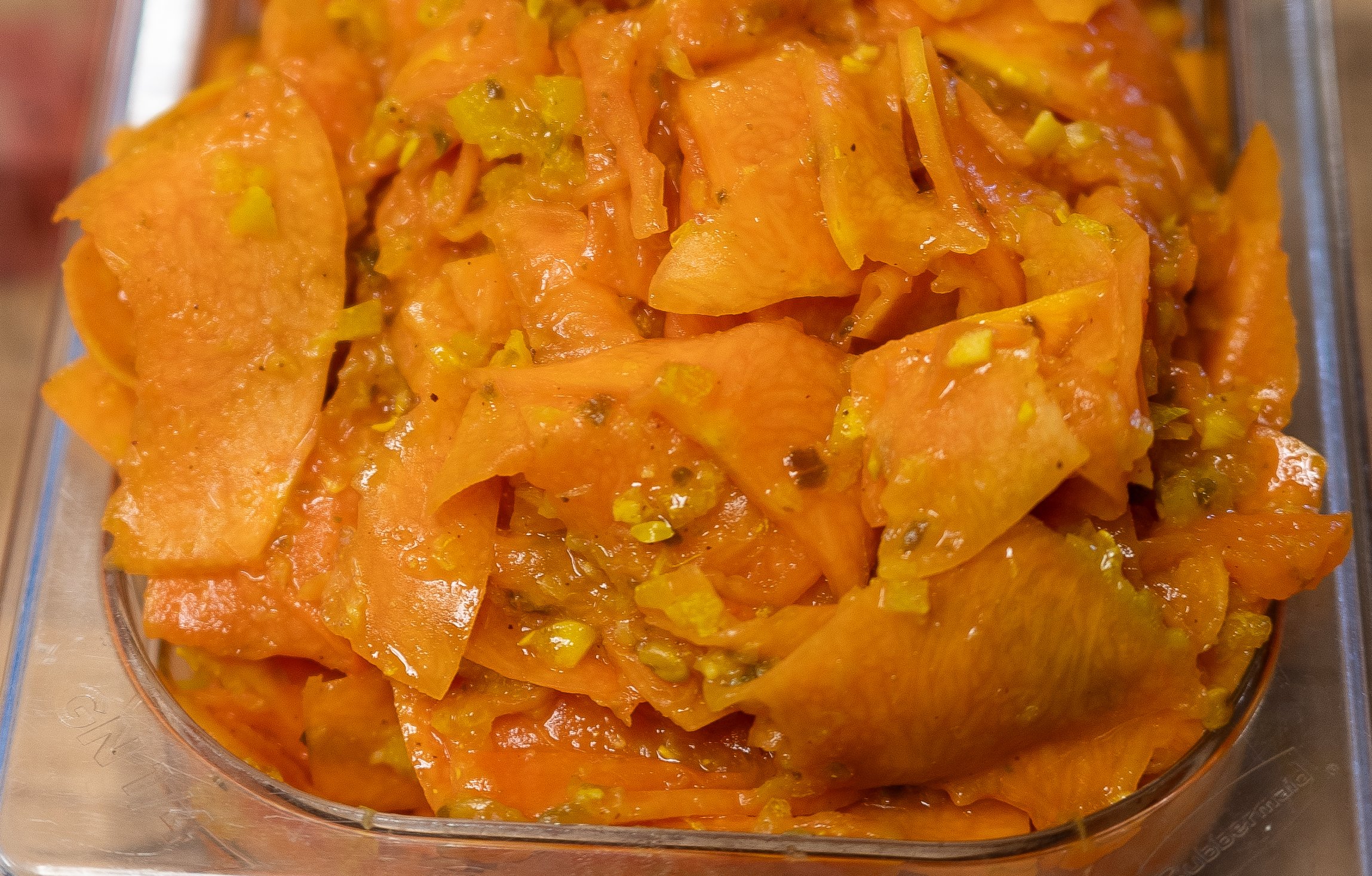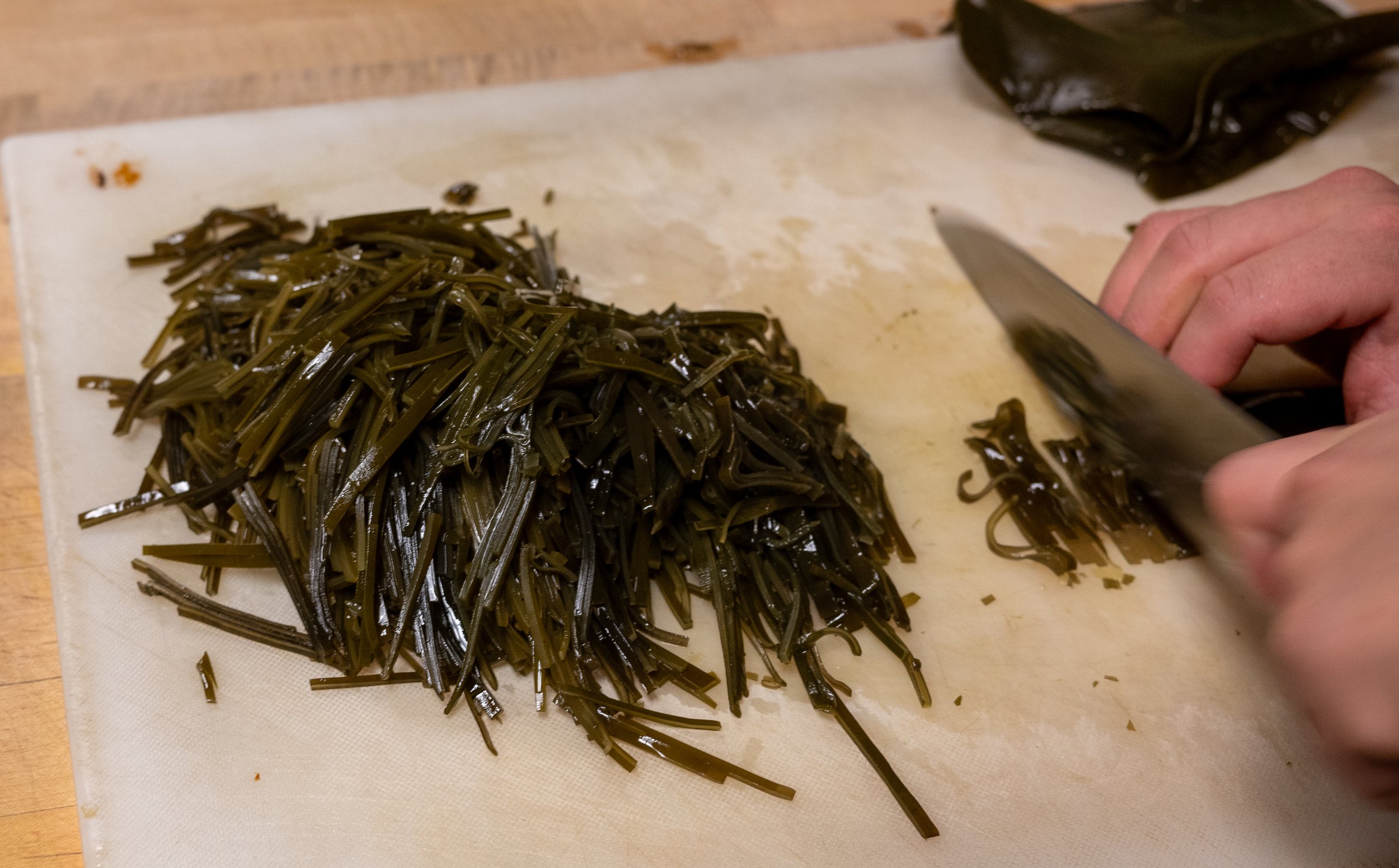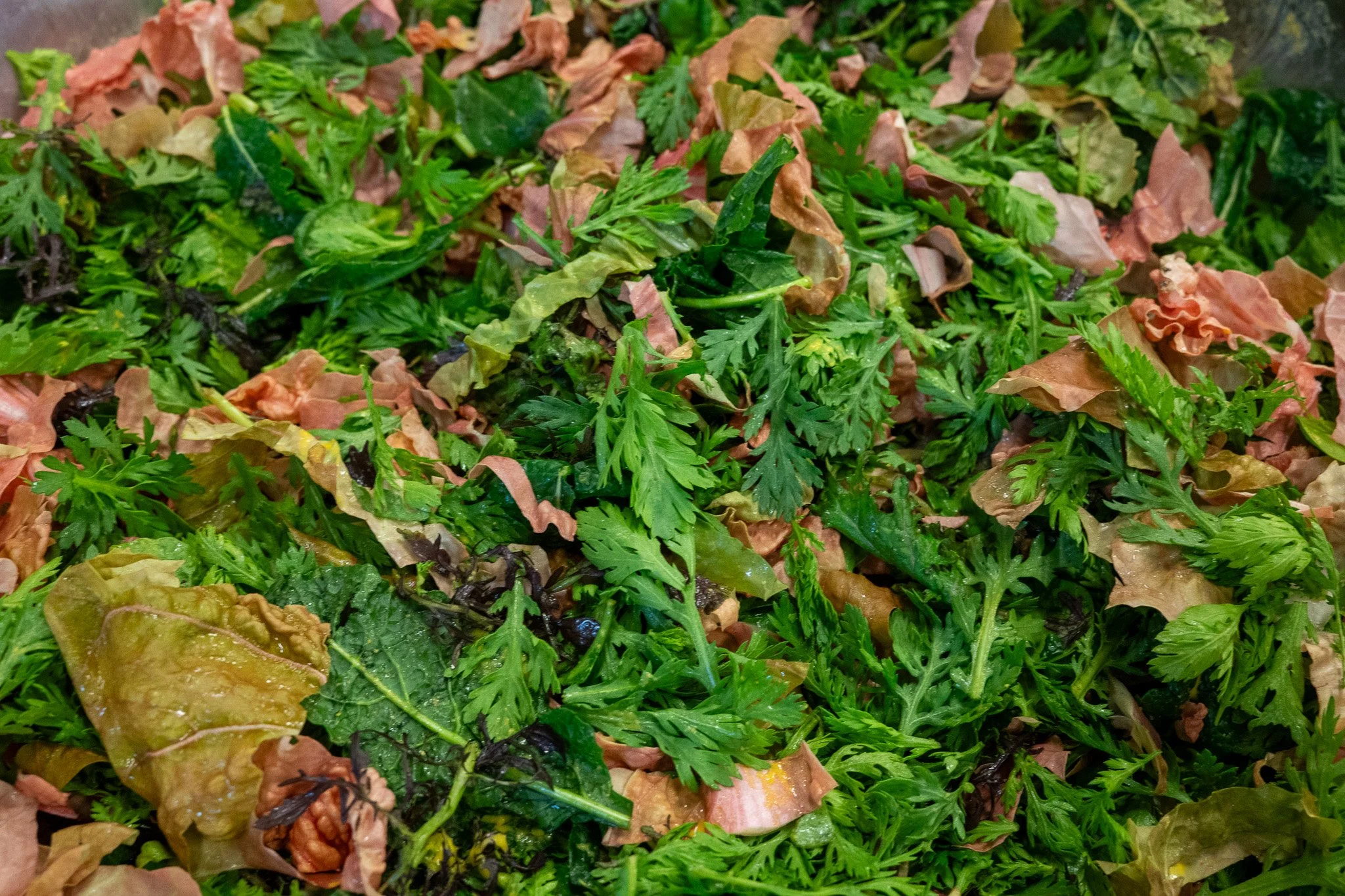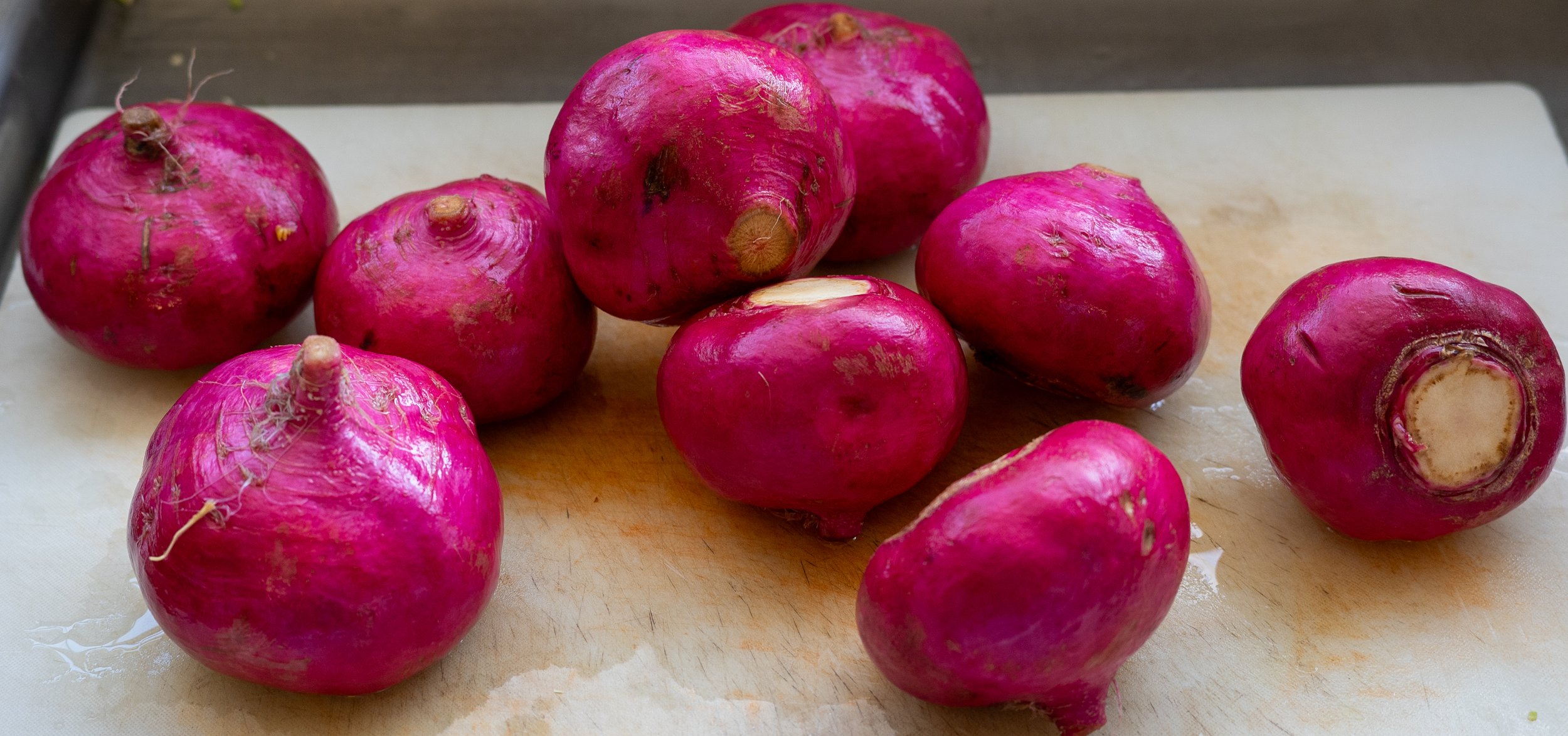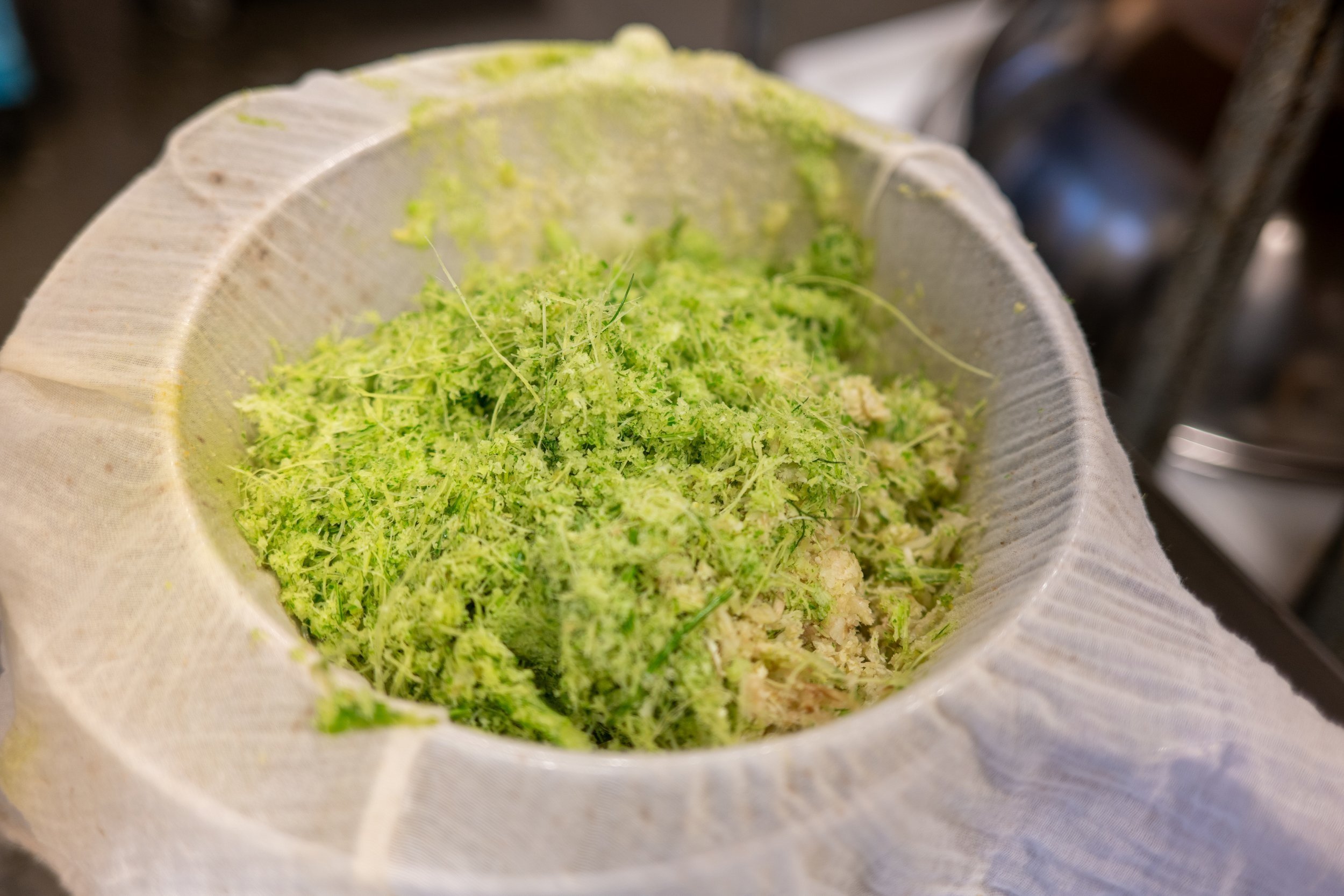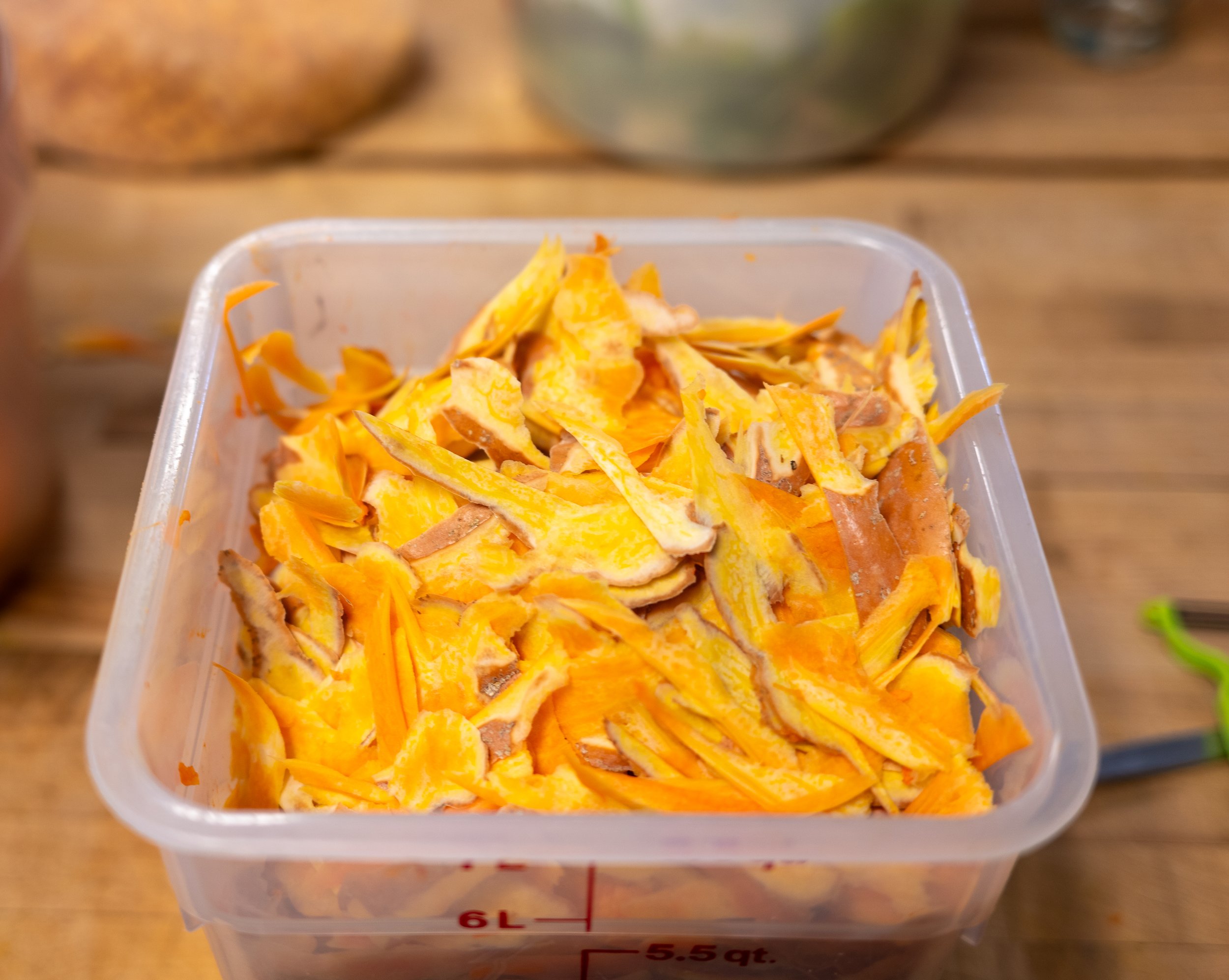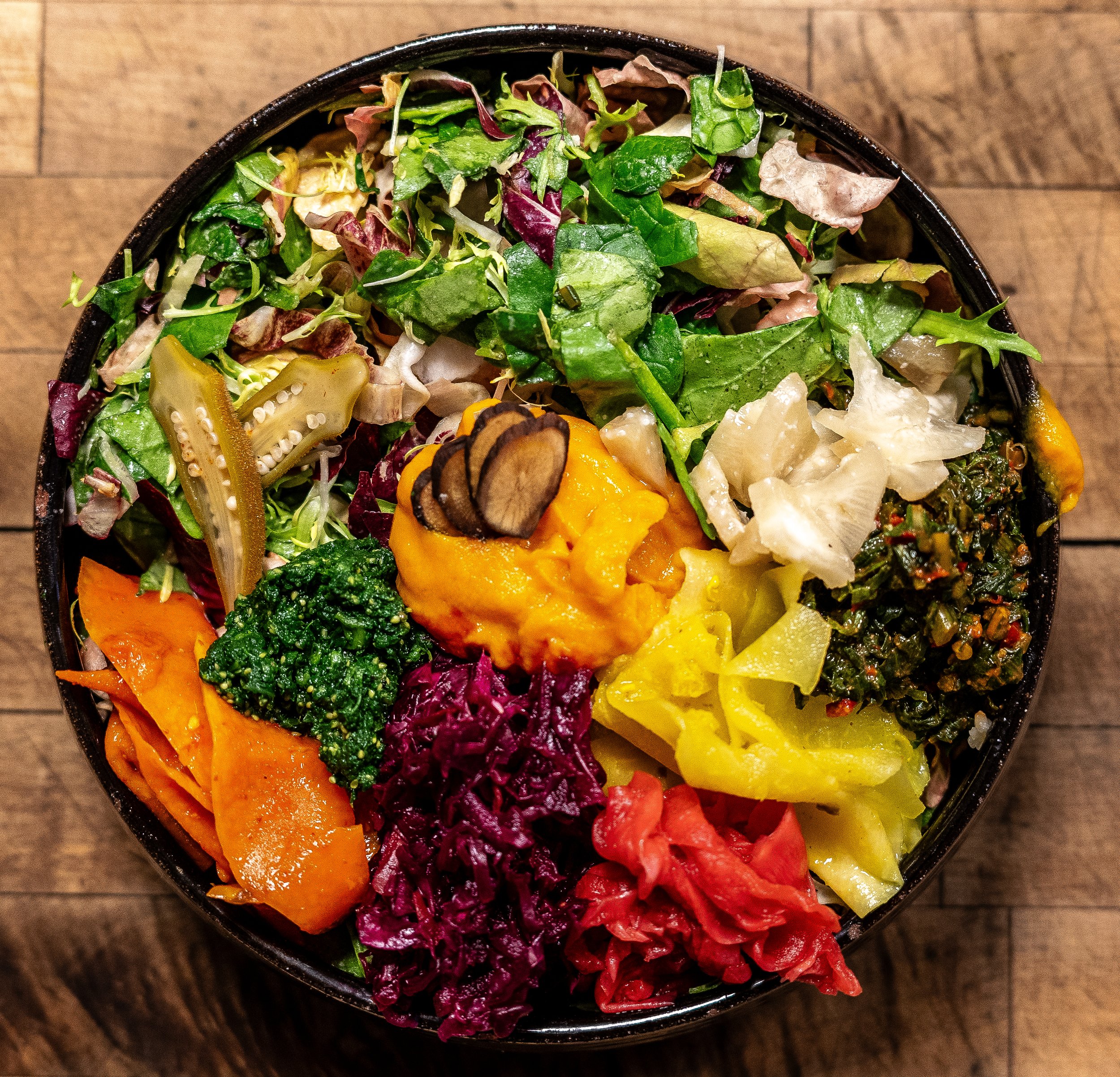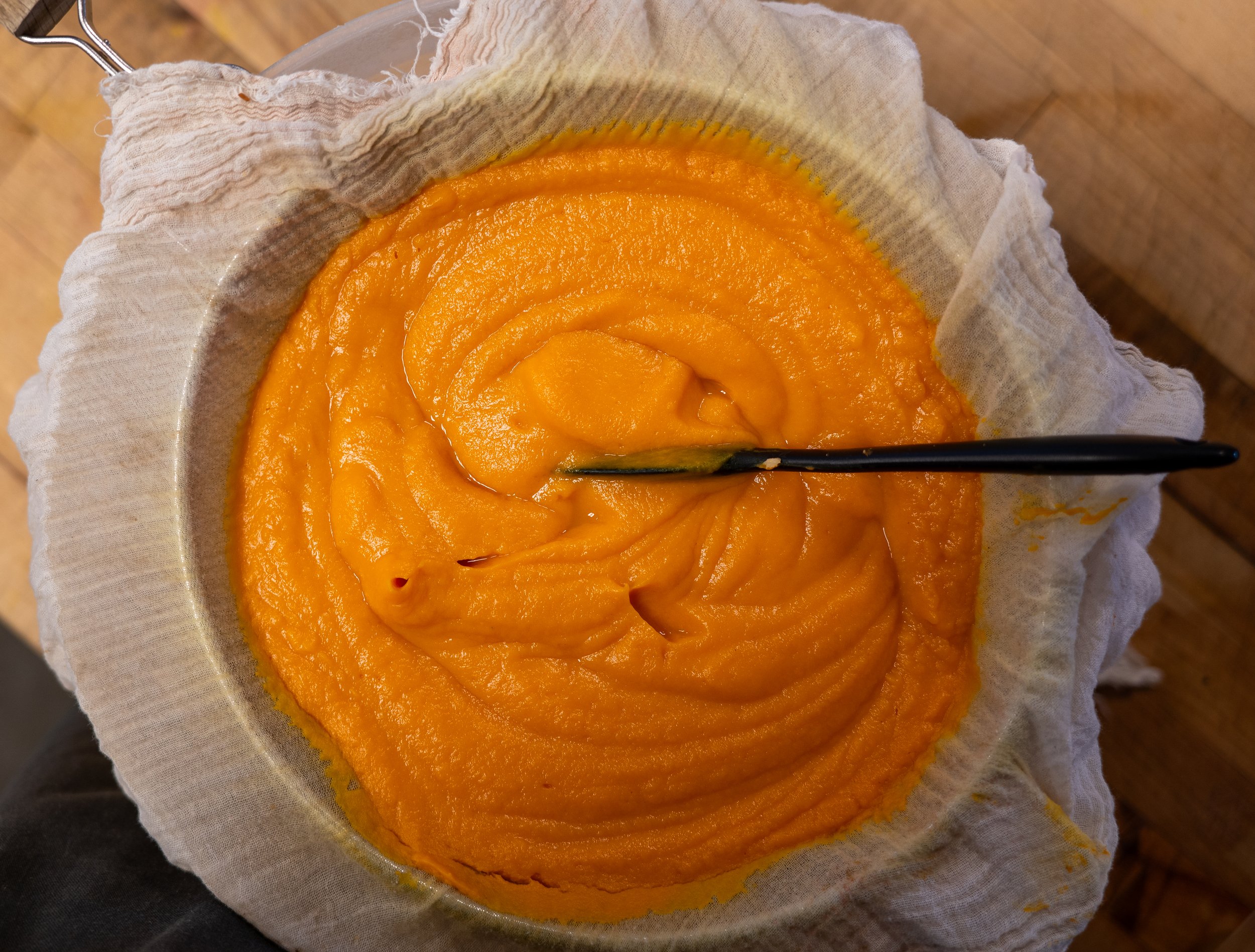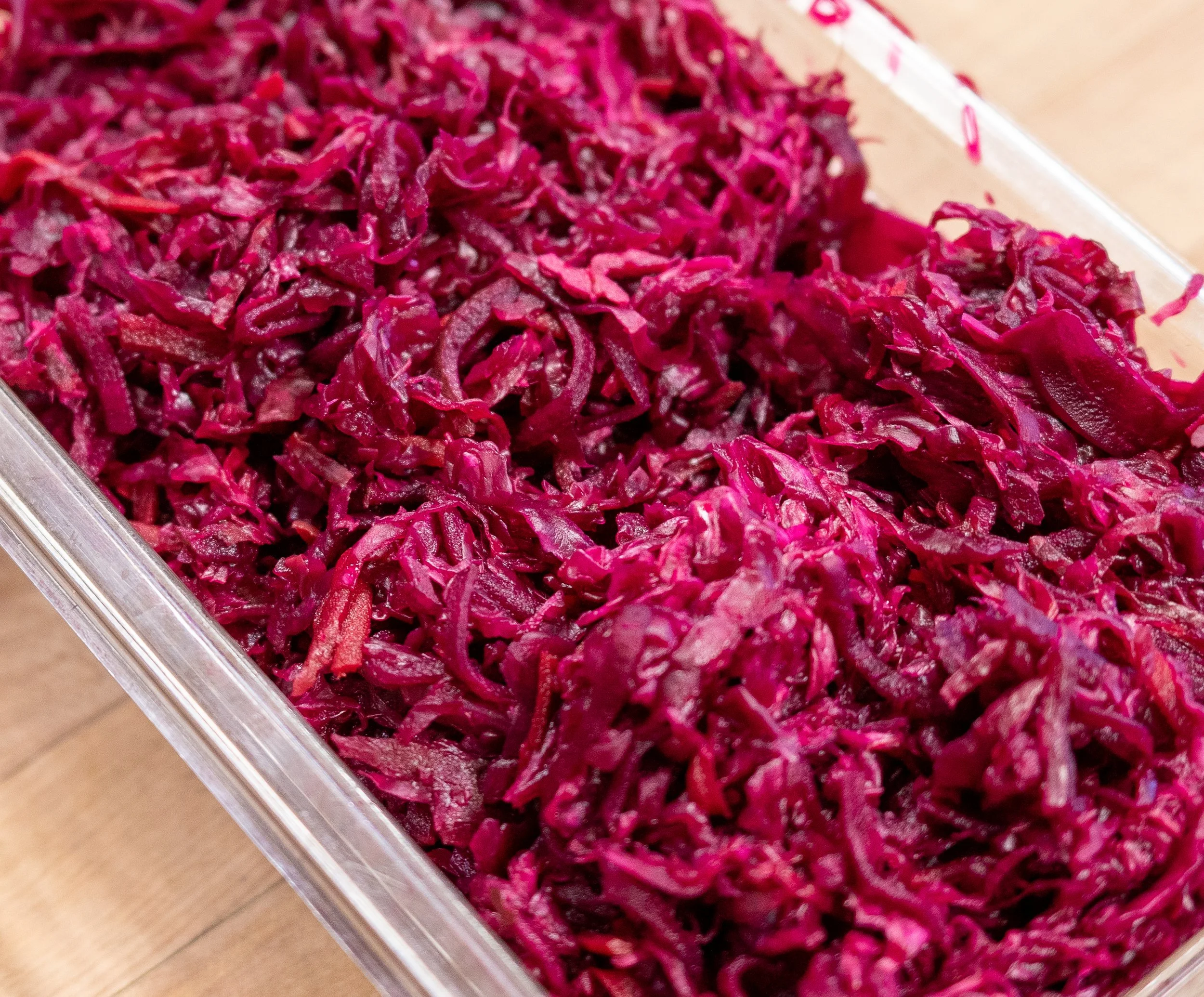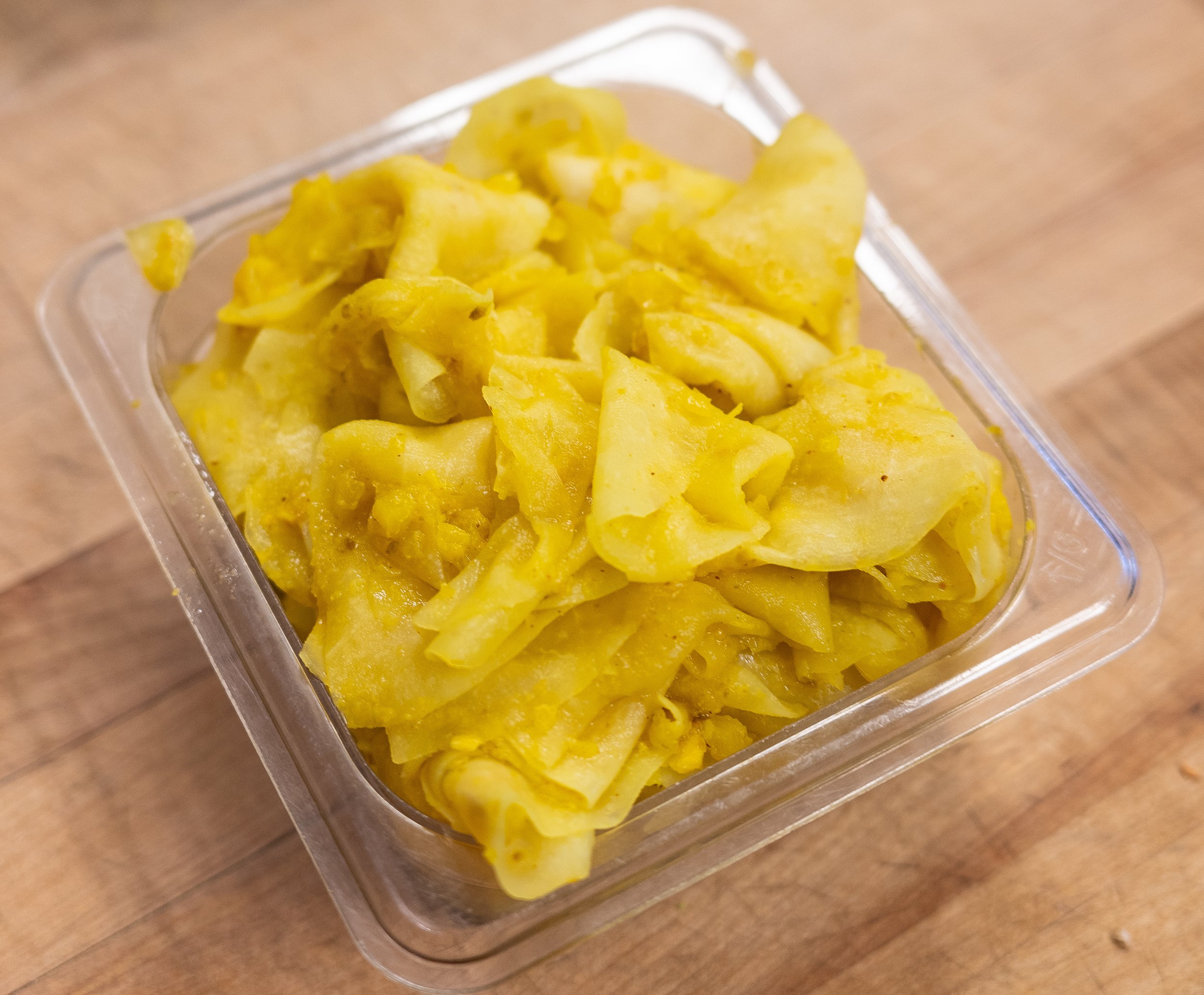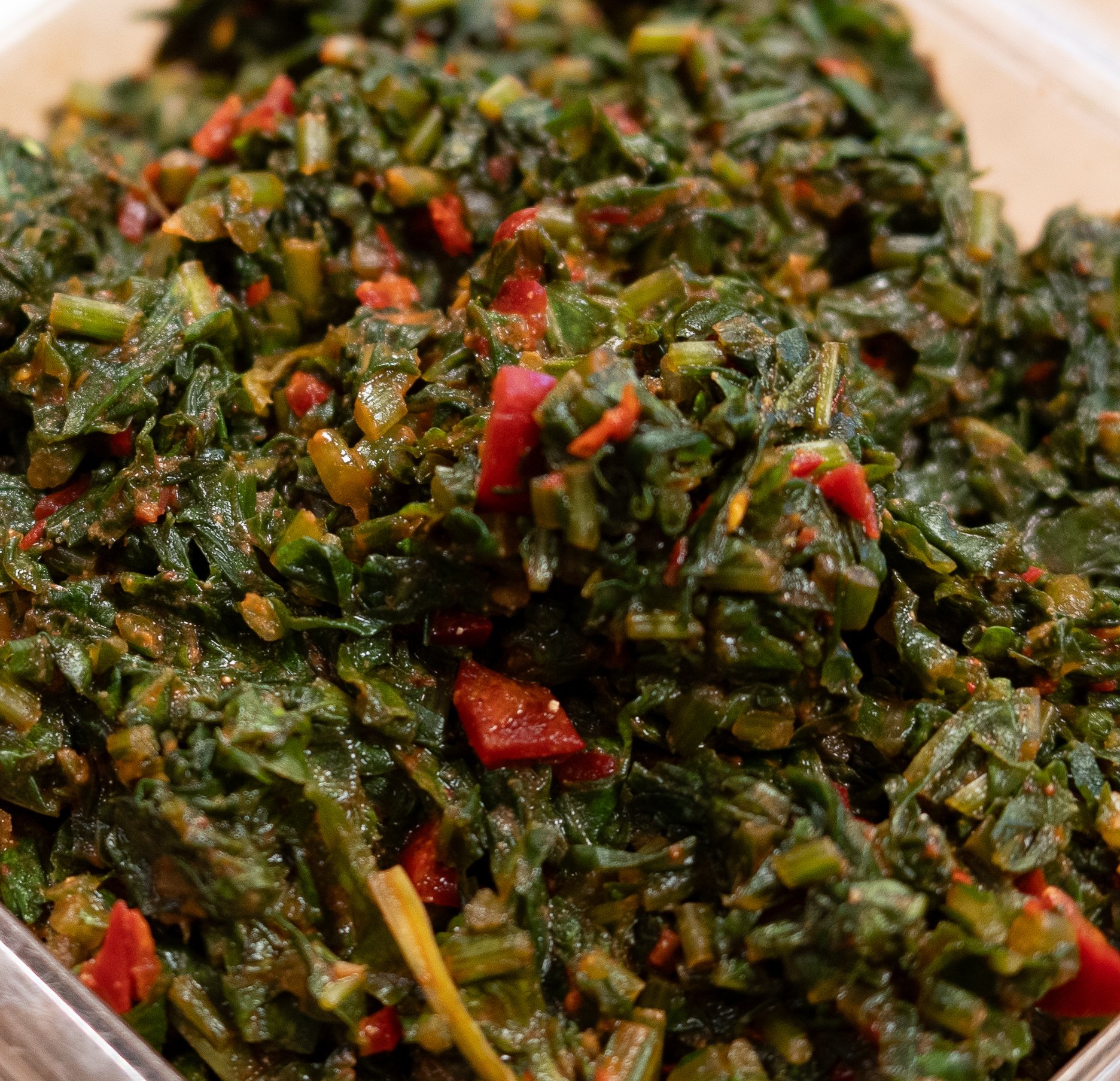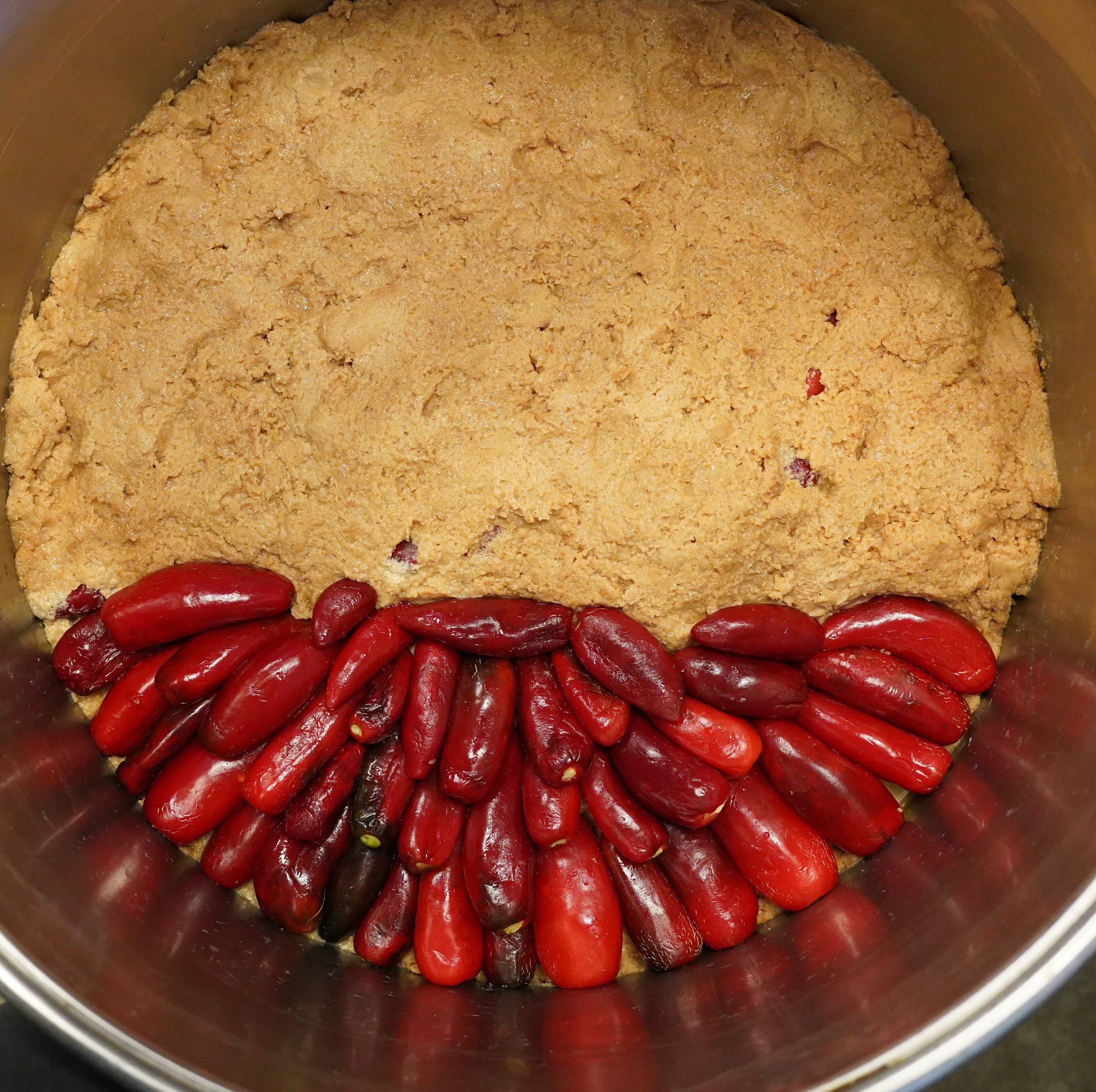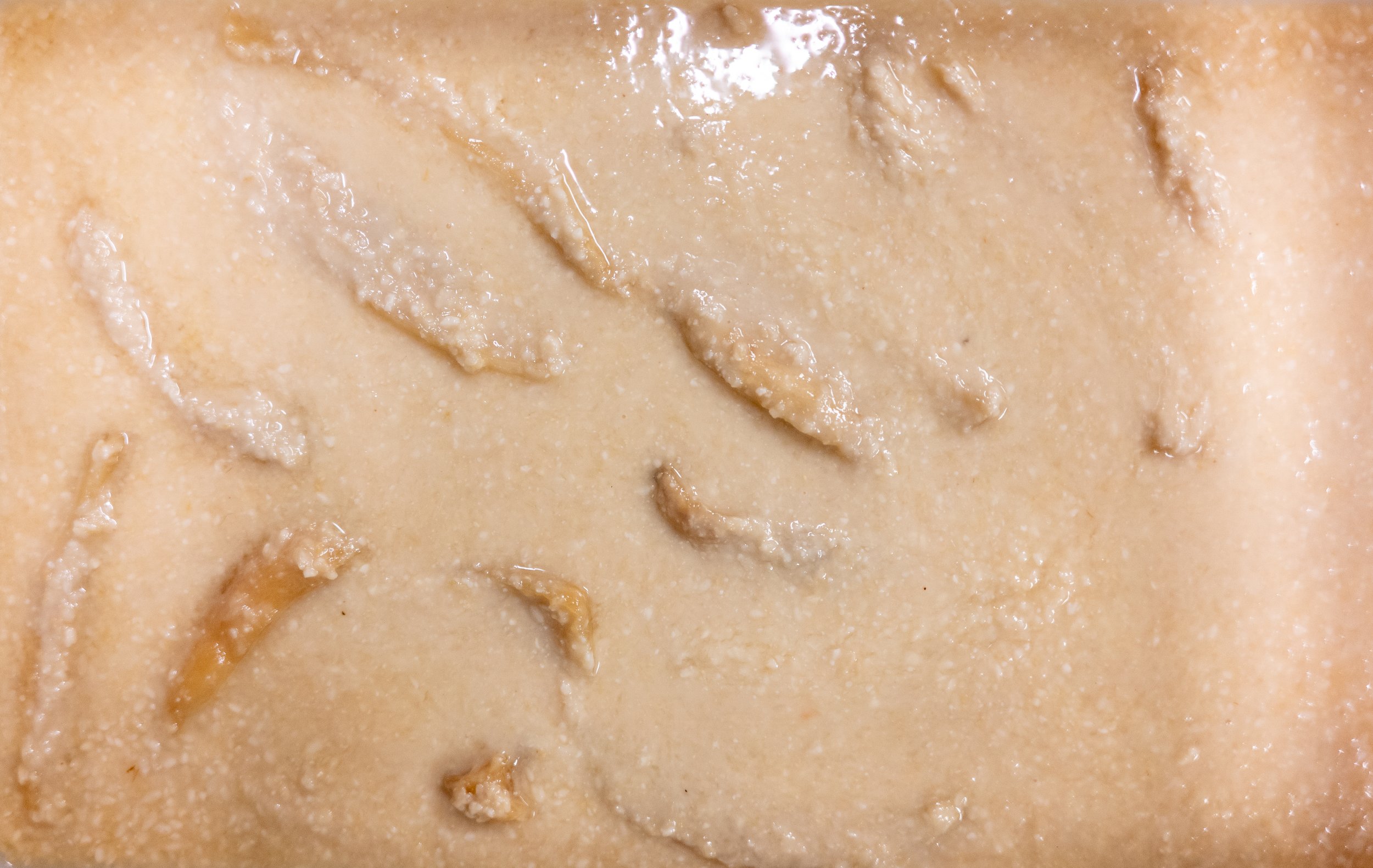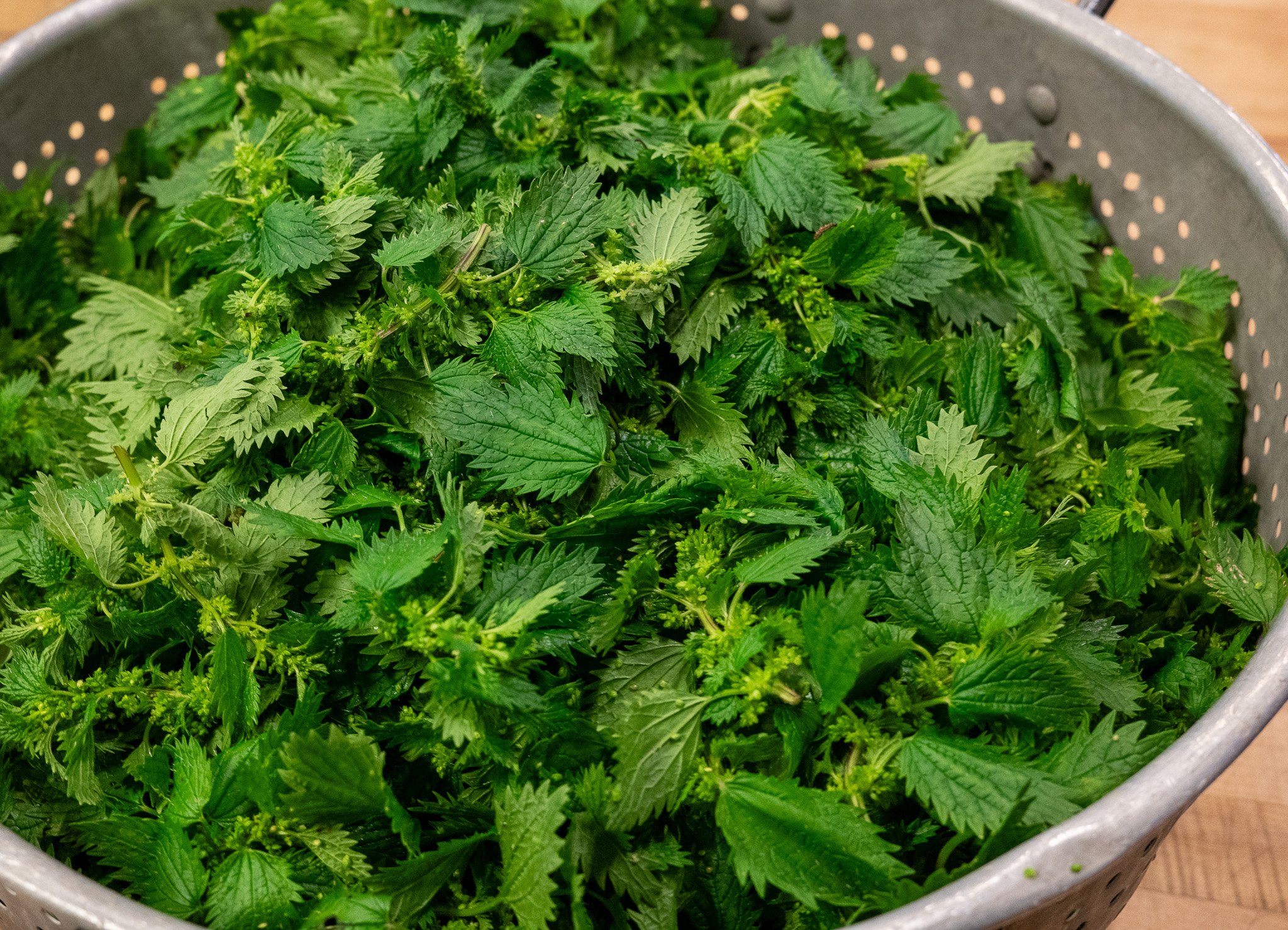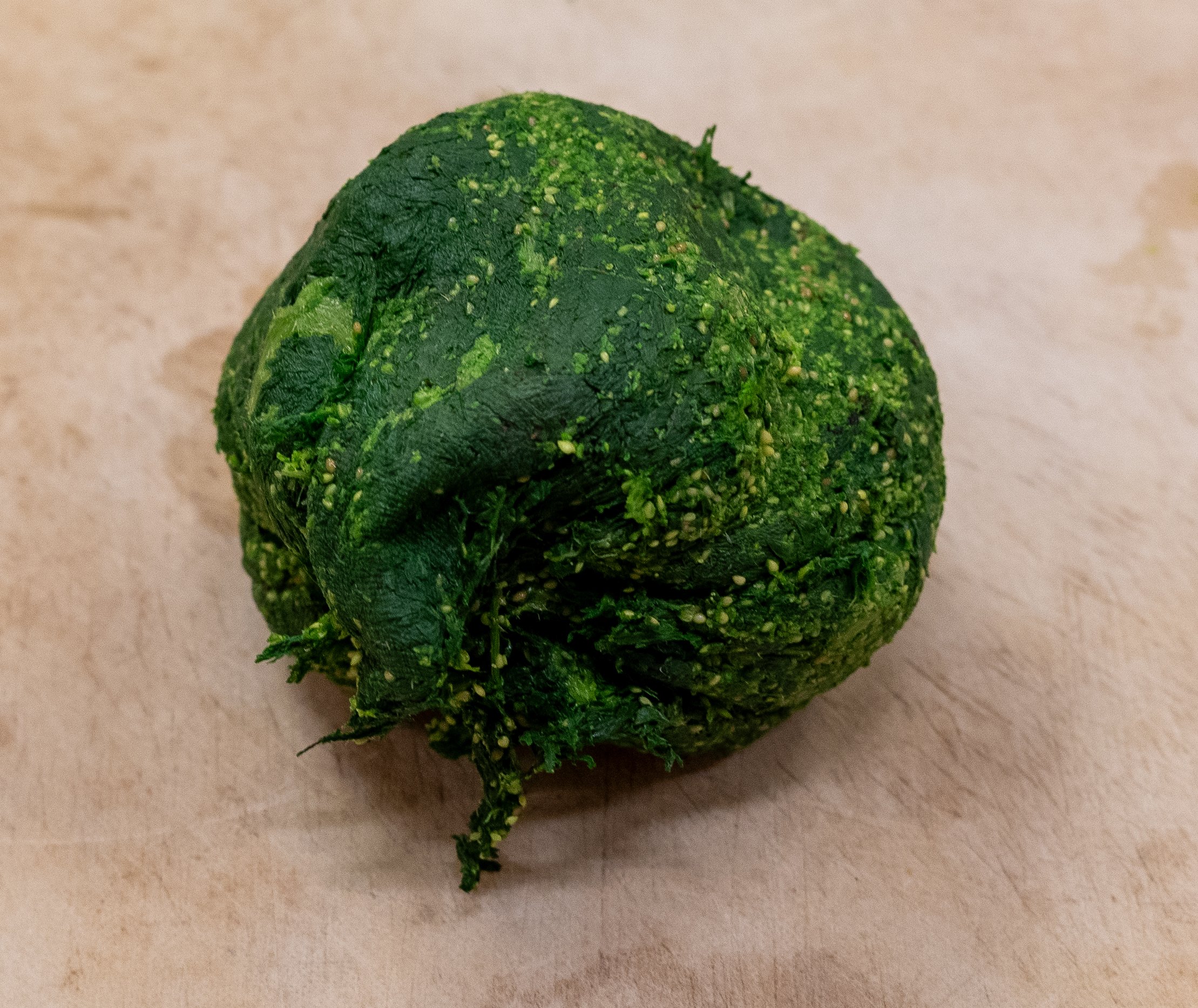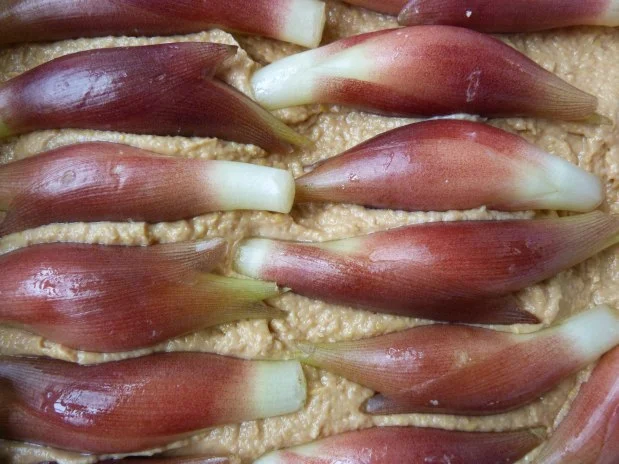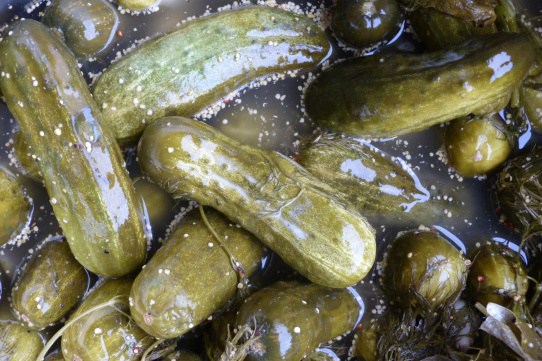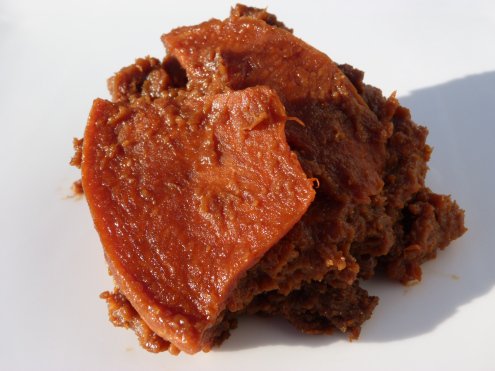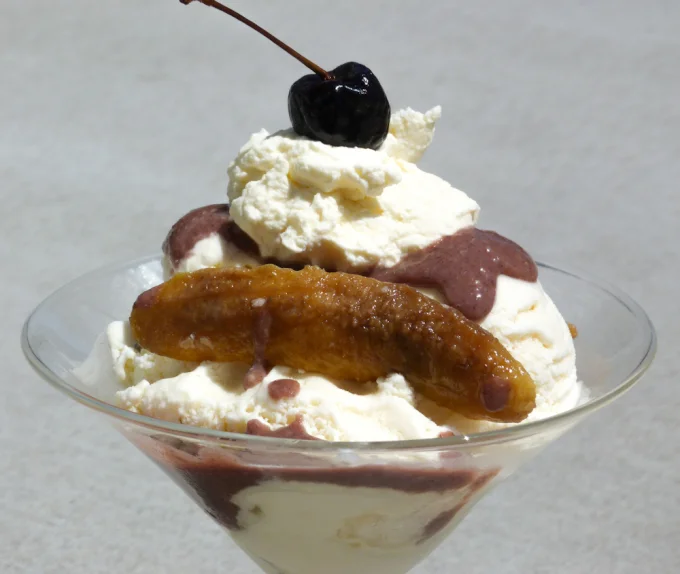Rice & Pickles March 16 & 17
You can click on any of components of the bowl above to identify them. Scroll down for more detail.
When you Dine in with us everything from the Dashi to the Sweet Bite is included in the meal. So, the only decisions you’ll need to make are the additions. We have
Goma Dofu, which translates to Sesame Tofu. Goma Dofu is not a true tofu, in that there is no soy in it. It is made entirely out of Sesame Seeds, which are toasted, ground, pureed with some Dashi, and then heated with Kudzu Root. Kudzu Root is a root starch that acts as a binder and lends a texture to the finished product that is similar to a silken tofu, which is where it gets its name. We also have avocado. The avocados this week are Fuertes; we top them with fuyu persimmon puréed with young green Umeboshi. We also offer a cured egg. We make the eggs every Wednesday. They are a six-and-a-half minute egg that we marinate in a mixture of tamari and shiso vinegar, which is a shiso kombucha that has gone to acetic, or vinegary, to use a beverage, but the shiso flavors are still nice and clean, so we long age it into a mild vinegar mix it with the tamari and sake lees from last years Kabocha squash ferment.
Cured Eggs
We always begin the bowl with a 50/50 blend of short-grain brown and sweet brown rice, sticky or glutinous brown rice, grown by the Lundberg Family here in California. We cook our rice in a Donabe. Donabe are a family of Japanese clay cooking vessels. The Donabe we use is called a Kamado-san and is specifically designed as a rice cooker. Our Donabe comes from Iga, Japan, and has been made by the Nagatani-en family for 5 generations. Iga is a great location for Donabe making because the clay body that is found in and around Iga has a high microscopic fossil content, which results in superior heat retention in the clay products that come out of the area; so, not only is the Donabe a beautiful and effective rice cooker but it also acts a warmer as it's very slow to cool once it has come off of the flame. We top the rice with a gomashio or sesame salt. Our take on this traditional Japanese toasted sesame and salt condiment is that instead of using salt, we use either one of our ferments that we have dried and powdered or a seaweed. Today, we have toasted sesame seeds and dried and powdered beet pulp left over from juicing beets for kombucha, which gives it color, and we use Sea Lettuce instead of salt.
Donabe cooked Rice
Beets Pureed with Kasu
The Beets were steamed, pureed and seasoned with Sakle Lees, the solids that are flitered out at the end of the sake making process, a paste of rice & yeast called Kasu or Sake Kasu; that had beets fermenting in it last year.
Beet Puree
Beet Kasuzuke. The lees from this ferment were used to season the steamed beet puree.
Carrots Fermented with Dulse & Green Garlic
The Carrots are cut into ribbons and fermented with Dulse, which is a red Seaweed from the Atlantic, and Green Garlic.
Daikon Bettarazuke
We start by peeling and cutting the daikon into wedges. The peels are dried for kiriboshi and the wedges are dried for few days. Meanwhile, we make a mash made from rice, rice koji, and barley shochu; we put the dried and salted daikon in the mash and let it ferment for about a week.
Beet Green Kimchi
Sea Kraut
A Green Cabbage Sauerkraut made with Gold Beets, Burdock, Ginger and three types Seaweed; Arame, Dulse & Hijiki.
Spinach with Jalapeno Kasuzuke
Spinach was mixed with Jalapenos Fermented in Sake Lees for over a year- Jalapeno Kauzuke . Takara Sake, one of the larger sake producers in our region, is just a few blocks from The Shop. We essentially tap into their waste stream; we get the byproduct from their fermentation, a paste made up of rice, rice koji, and yeast. We take that paste, called kasu or sake kasu, and we add sugar to it to feed the yeast that is still living in it; we add salt to it to moderate the fermentation and for texture preservation, and then we bury vegetables, such as Jalapenos, in it for an average of 12-18 months to make the pickle known as kasuzuke which means pickled in kasu. This week we took the jalapeno Kasuzuke, mincied the jalapenos and mixed them with the spinach.
Red Daikon with Indian Pickled Lime
Red Daikon mixed this week with our Indian Pickled Limes - an 11-month fermentation of limes; they are our version of an Indian achar, like the mango pickle you might get on the side of your dosa. The limes are minced, mixed with the Red Daikon, and left to sit for a few days















